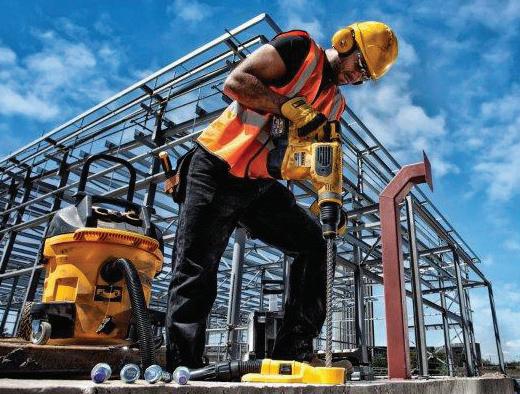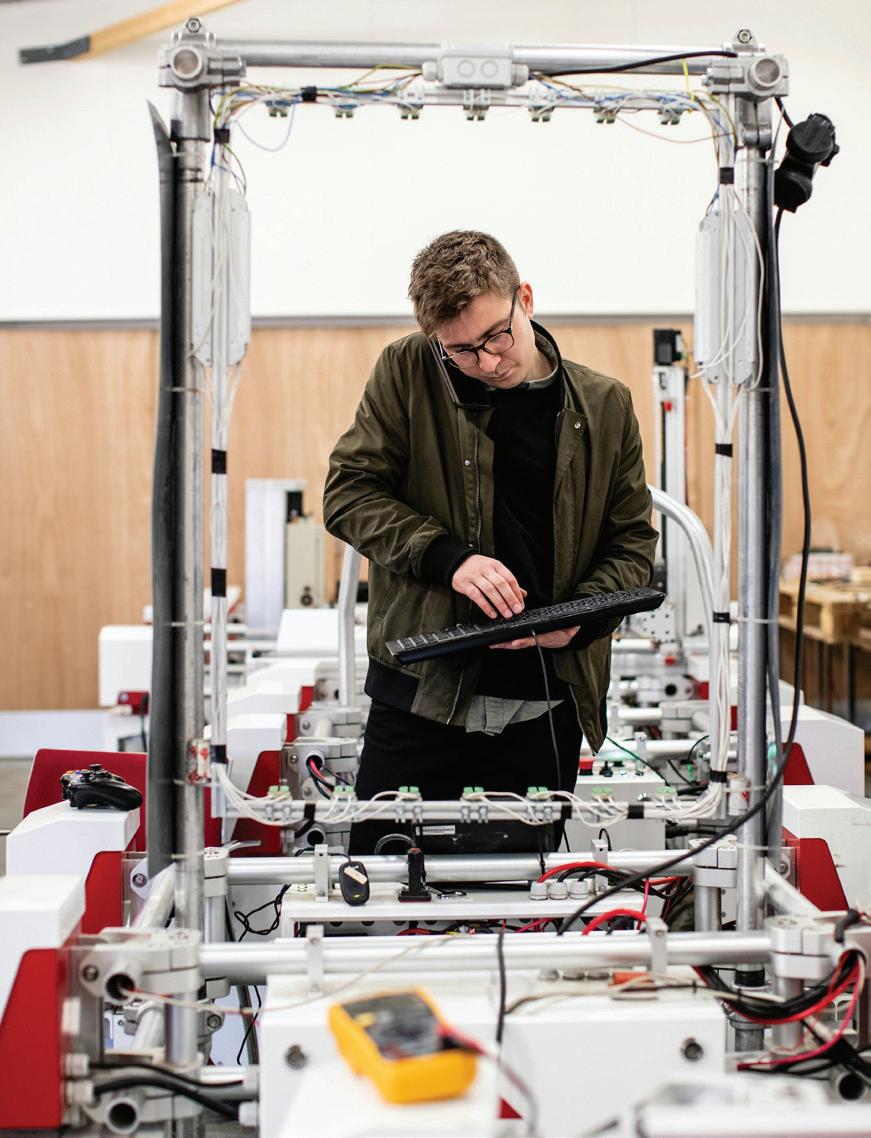
How global trends are shaping our local business environment.
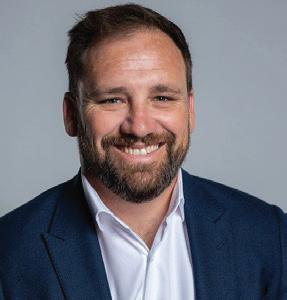
Kiwi exporters can plan and adapt now we have some tariff certainty.


How global trends are shaping our local business environment.

Kiwi exporters can plan and adapt now we have some tariff certainty.
-Sean Doherty
Sir Paul Callaghan famously declared: “New Zealand is poor because it choosest to be.” Nearly 15 years on, with the decision to dissolve Callaghan Innovation the agency bearing his name, these words ring truer than ever in 2025.
At this turning point, New Zealand must decide: Will we finally address the innovation deficit by embracing high-value manufacturing, or continue on a path of slow, incremental change?
The productivity trap

Cutting red tape to encourage productivity.

New Zealanders are admired for their work ethic and creativity. Yet, the nation continues to lag behind its global peers in productivity and prosperity. The key reason? An overreliance on low-value, commodity-driven industries rather than advancing technology-rich, high-value sectors.
Despite technological progress worldwide, New Zealand’s per-capita prosperity growth has not matched high-value, knowledge-led economies over the past two decades.
International comparisons
• Israel, Singapore, and Ireland are cited as examples of nations that have transformed through purposeful investment in advanced research, tech-enabled manufacturing, and robust support for innovation and entrepreneurship.
• These countries consistently invest in science, technology, and high-value manufacturing, creating dynamic economies with sustained prosperity.
Sir Paul Callaghan stressed that true prosperity can only be achieved by focusing national efforts on innovation-intensive sectors.
Efforts to “pick winners” in areas like biotech, agritech, and clean tech have delivered mixed

Sheetmetal Parts
continued on Page 21 includes, Getting under the hood of Kiwi manufacturing.

12 18 19 7
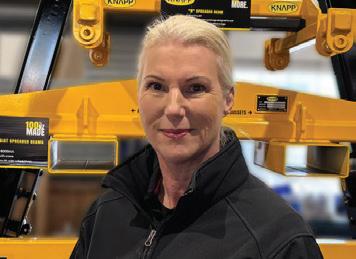
In the following article from the UK there is some good learning to be had for NZ Manufacturers, and if they are listening, Government (MBIE particularly Small Business & Manufacturing), and other key stakeholders on the importance of a solid strategic approach to achieve higher levels of productivity using technology.
The UK’s Industrial Strategy, that was released this year, is focused on Advanced Manufacturing with a significant growth target to be achieved with significant investment in the sector growing from the current business investment of £21bn to £39bn in 2035.
Clearly not the sort of investment we could compete with in NZ but does demonstrate that investing in Smart Manufacturing is worthwhile for economic prosperity.
Within the article are a series of logical steps that can be applied to any industry sector to prepare for and use technology to be a smarter manufacturer.
The article is written by James Watson, Parter with Argon & Co, along with Rachel Noll, Manager of Data/AI at IRIS.
With a fresh 10-year blueprint for economic growth, the UK’s Industrial Strategy puts advanced manufacturing at the heart of its ambitions. James Watson and Rachel Noll at Argon & Co explore how smarter use of data, automation, and robotics can help manufacturers unlock productivity, resilience and long-term growth
The UK Government’s newly launched Industrial Strategy was long in the making, but has arrived with bold ambitions. Its 10-year roadmap for economic growth has a firm bet on advanced manufacturing as one of the eight high-potential industries in the UK, along with sectors like financial services, clean energy, and life sciences.
2D Drawings
Secons
Developments
Exploded views
30-day free trial available Solid Parts

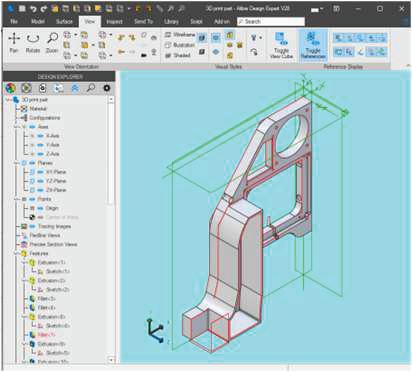
Export files for CNC 3D Design Solid Modelling Soware Powerful, easy-to-learn and use.
For many operating in this sector, this support couldn’t have arrived soon enough. Manufacturing has been pushed from disruption to disruption, hampered by inflation, persistent labour shortages, and global supply chain crises. Businesses have been urgently calling for tools to help them do more with less, and, against this backdrop, the Government’s commitment to invest in digital transformation and skills has been

Buy it and own it, no subscripon or cloud. Most cost affecve 3D CAD program to own.
continued on Page 21
3D Printer + Discounted Alibre Design bundle offer. Design and print prototypes and producon parts.

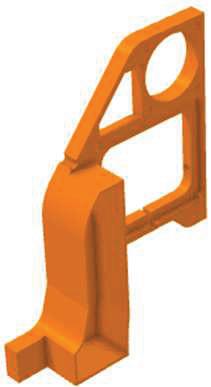
Largest selecon of 3D Printers and materials for Hobbies and Commercial Producon
Contact: Bay CAD Services Ltd - Napier NZ Contact: Formtech Ltd—Christchurch NZ www.baycad.xyz 0274847464 www.formtech.co.nz 0274940250
Secure supply of energy and data to moving industrial equipment.
• Large size range
• Vertical travels
• Energy tubes

• Hygienic chains
• Solutions for long travel
• Guide troughs
• Readychain
• Robotic, 3D
• Circular movement

HUGE range of high quality flexible cables
• Control cables
• Single cores
• Data cables
• Sensor/Actuator
• Intrinsically Safe
• VSD/EMC cables
• Halogen Free cables
• High temperature
• Harsh Conditions
• Crane cables
• Profibus cables
• Bus/DeviceNet
• Solar cables
• Instrumentation
• Flat cables
• Curly cords

Largest range of flexible conduits for cable protection
• Conduits
• Conduit fittings
• Divisible systems
• Jumbo systems
• Conduit Accessories
• Braided cable protection
• Fire barrier solutions
• Food and beverage
• EMC systems
• Ex, ATEX, IEC EX

Industrial connectors for many industries
• Rectangular multipole connectors from ILME
• Single pole Powerline connectors from TEN47
• EPIC connectors from Lapp Group
• M23 circular connectors from Hummel
• Circular connectors specifically for the entertainment/stage lighting industry from Socapex

Safety engineering solutions from EUCHNER
• Multifunctional Gate Box MGB
• Transponder-coded safety switches
• Electromechanical safety switches
• Magnetically coded safety switches

Sensor technologies for automation
• High-Precision Laser Distance Sensors
• Ultrasonic Sensors
• Inductive Sensors
• Fluid Sensors


www.nzmanufacturer.co.nz


www.womengoingplaces.net

www.jezmedia.net

www.australianmanufacturingnews.com
www.smartmanufacturingtoday.com

www.foodinnovationist.com
www.asiamanufacturingnewstoday.com
www.themirrorinspires.com

LEAD
New Zealand is poor because it chooses to be.
Smart manufacturing and the UK government’s industrial strategy.
BUSINESS NEWS
How global trends are shaping our local business environment.
Reflections from my North American trip as a tech founder serving manufacturers.
EMA-COMPANY PROFILE
Artisan skill and technology a successful brew at Zealong Tea Estates.
SMART MANUFACTURING
Stronger, cheaper titanium a ‘leap forward’ for industry.
On the ground, in the regions: Supporting manufacturing and more across Aotearoa.
Digital upskilling for the future.
Construction 4.0 Technologies. Dispatches from Europe -a guide for New Zealand manufacturing leaders.
Cutting red tape to encourage productivity.
COMPANY PROFILE
South Waikato Precision Engineering.
SUSTAINABILITY
Make your emissions reporting easier with spend-based emission factors.
2025 KIWINET AWARDS FINALISTS.
WORKSHOP TOOLS
80% lower CO2 footprint: igus switches to recycled material for energy chain series E2.1.
ARS200 rugged waterproof outdoor computer for extreme environments.
ATX Motherboard with Intel Core Ultra 200S for industrial edge computing.
DEVELOPMENTS
Uplift in construction industry confidence. Solar energy course to meet EWRB requirements.
COMPANY PROFILE
Sutton Tools have staff who never want to leave
THE LAST WORD
Innovation stalled.

Ian Walsh
Ian Walsh is a leading expert in designing and implementing transformational improvement programmes, with over 30 years of experience helping businesses drive operational excellence and long-term success. A Six Sigma Master Black Belt, he has worked with both New



Zealand’s top organisations and global multinationals including Kimberley Clark, Unilever, Guinness to unlock productivity, reduce costs, and optimise business performance. Ian has been at the forefront of operational improvement, working at all levels—including Boards—to deliver high-impact change. Ian continues to play a key role in advancing business excellence, supporting Auckland University and The Icehouse with expert insights on productivity, operational improvement, and best-practice methodology.

Dr Barbara Nebel
CEO thinkstep-anz
Barbara’s passion is to enable organisations to succeed sustainably. She describes her job as a ‘translator’ – translating sustainability into language that businesses can act on.
and Manufacturing.
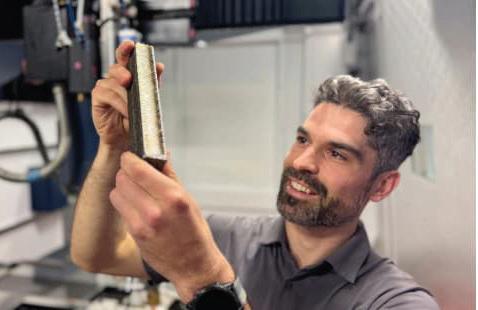

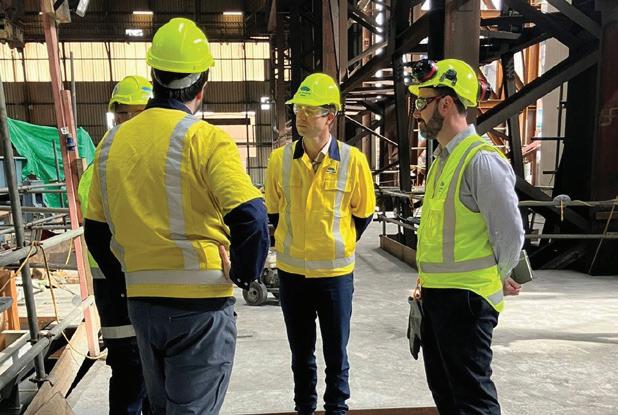

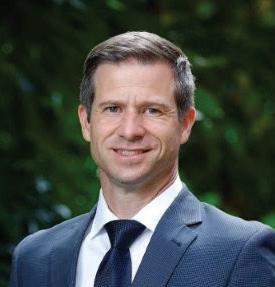
Mark Devlin
Having owned food manufacturing and distribution businesses for a decade, Mark Devlin now runs Auckland public relations agency Impact PR. Mark consults to several New Zealand manufacturing firms including wool carpet brand Bremworth, aircraft exporter NZAero and cereal maker Sanitarium.
Insa Errey
Insa’s career has been in the public and private sectors, leading change management within the energy, decarbonisation, and sustainability space. Insa holds a Chemical and Biomolecular BE (Hons) from Sydney University. She is a member of the Bioenergy Association of NZ and has a strong passion for humanitarian engineering, working with the likes of Engineers Without Boarders Australia.
Insa is a member of Carbon and Energy Professionals NZ, been an ambassador for Engineering NZ's Wonder Project igniting STEM in Kiwi kids and Engineers Australia Women in Engineering, increasing female participation in engineering.

6 10 11 13 16 18 19 22


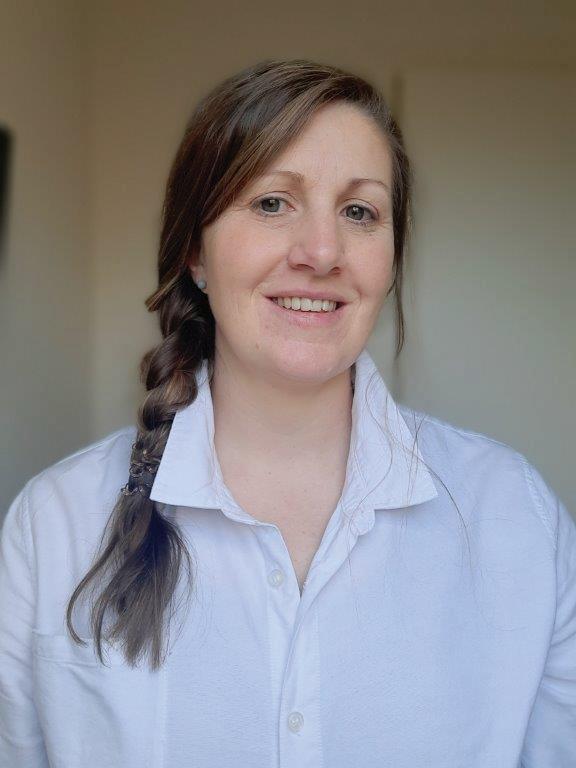
Jane Finlayson is Head of Advanced Manufacturing at the EMA, and has 25-years’ experience in business and economic development. She is passionate about empowering businesses to grow, innovate and embrace Te Ao Māori.

PUBLISHER
Media Hawke’s Bay Ltd, 121 Russell Street North, Hastings, New Zealand 4122.
MANAGING EDITOR
Doug Green
T: 027 348 1234
E: publisher@xtra.co.nz
CONTRIBUTORS
Holly Green, EMA,
Business East Tamaki, Ian Walsh, Adam Sharman, Mark Devlin, Nicholas Russell, Jane Finlayson, David Altena, Rob Bull, Chris Penk
Dr. Troy Coyle,Scott Adams, John Luxton
ADVERTISING
T: 027 348 1234
E: publisher@xtra.co.nz
DESIGN & PRODUCTION
:kim-jean:
E: kim.alves@xtra.co.nz
WEB MASTER
Julian Goodbehere
E: julian@isystems.co.nz
PUBLISHING SERVICES
On-Line Publisher
Media Hawke’s Bay Ltd
DIGITAL SUBSCRIPTIONS
E: publisher@xtra.co.nz
Free of Charge.
MEDIA HAWKES BAY LTD
T: 027 348 1234
E: publisher@xtra.co.nz
121 Russell Street North, Hastings NZ Manufacturer ISSN 1179-4992
Vol.17 No.7 August 2025


We don’t have a Productivity Commission and we don’t have Callaghan Innovation anymore.
No time to be sentimental but, who would run an Economic Reform Roundtable – like the one being held in Canberra this week, with a focus on Productivity? Because we badly need one.
We have the determination of EMA, HERA, NZCTU, ECANZ, IPENZ, VANZ to look after their members, assist them to get ahead and open opportunities. The Chambers of Commerce do the same. Technology groups talk the talk for their members as well.
But the negotiating aspect, the financial aspect, is needed to build on the 70% of export earnings coming in from the primary sector and ensure that manufacturing from the workshop, science and technology increase their market share on overseas markets.
And, of course, it asks the question: “What came out of the Investment Conference held earlier this year in Auckland?
Probably a good time to have another look on You Tube at: Sir Paul Callaghan - StrategyNZ: Mapping our Future - March 2011
As a decisionmaker, a leader in your company, you are welcome to share with readers your path to success and what the future looks like.
Enjoy the read.
Doug Green, Publisher

When I stepped away from my global executive role at Fisher & Paykel Healthcare, I wasn’t entirely sure what I wanted to do next, only that I didn’t want more of the same. I created space by completing an MBA, and by the end of my studies, I knew I wanted to start my own Leadership Practice.
I’ve always been passionate about creating a world of work where people know how they contribute and feel genuinely valued.
That led me to focus my Practice on leadership impact, building and sustaining high-performance teams, and helping organisations bridge strategy to execution.
My approach is based on the belief that leadership must be measurable, just like other parts of the business whether it’s finance, projects, customer satisfaction etc.
When we understand our inner game of leadership our strengths, blind spots, motives, and values, we improve our outer game: team outcomes, strategic results, leadership impact, and culture. Measurement brings insight; insight enables action; action drives results.
One of the biggest challenges I see today is what I call the “Busy Olympics.” The world of work has become fast, demanding, and always-on. Technology was supposed to make things easier, but often it just means we’re available 24/7. There’s an unspoken competition to be the busiest, but all this busyness is eroding clarity. And without clarity, it’s hard to
-Deb Bailey, Coach, Facilitator, Speaker, Author
prioritise what matters most, at work or in life. Clarity takes courage and discipline. It means being willing to ask the big questions: Where am I going? What am I here to do? What matters most right now? When we have that clarity, we’re able to say ‘no’ to the noise and distractions and yes to the things that make the biggest difference.
I believe business success is fundamentally about the quality of its leadership. Yet, we often promote people for their technical skills and expect them to automatically become great leaders.
We hand them teams and say, “good luck,” with little to no development. This sets people up to struggle. The more senior someone gets, the less likely they are to admit they need support, especially if the culture rewards knowing rather than learning. At its heart, setting a clear mission in business means identifying the problems you solve, who you serve, and why it matters.
It’s about living the organisation’s values, not as posters on the wall, but as behaviours people experience every day. Culture isn’t something dictated from the top; it’s co-created through daily actions and decisions.
Loving what you do matters. When your work aligns with your values and the contribution you want to make, it doesn’t feel like a grind, even on hard days. Much of my work involves helping leaders integrate life and business.
Often, I see people who are achieving outward
success, but their personal lives are out of sync. Relationships suffer. Energy drops. The spark disappears.
That’s why I wrote Navigate Your Impact: How to Achieve Goals That Really Matter. It’s a decision-making guide that helps people understand where their time, energy, and money are going, and whether those investments align with the life they want to lead. It’s about tuning out the noise and focusing on what’s truly important.

I love helping leaders get clear, gain confidence, and act with conviction. Impact comes from taking action, not just knowing what to do, but actually doing it.
Leadership isn’t about perfection; it’s about progress. Sometimes our experiments won’t work, but we learn, adapt, and move forward.
In a rapidly changing business landscape, leaders need practical tools, not more complexity. The biggest challenges they face? Knowing what matters, cutting through the noise, engaging others, and aligning strategy with reality.
That includes balancing new initiatives with current capacity, something often overlooked.
Leadership, done well, creates clarity, builds trust, and drives meaningful results. It’s an honour to walk alongside leaders as they navigate their path with impact and purpose.


-By John Luxton. RegenerationHQ
1. Introduction
Many New Zealand SME owners are finding that pressures once considered “global issues” are now showing up in their bank statements, delivery schedules and customer orders. Whether it’s shifting supply chains, falling export demand or volatile currency, international trends are making local decisions harder.
This article belongs to Pillar 1 - The Economic Reality. Its purpose is to explain in plain English how global economic forces are filtering through to affect small and medium-sized businesses in Aotearoa. We’ll explore China’s slowdown, currency shifts, international inflation and supply chain disruptions. Most importantly, we’ll focus on what you can do about it.
2. Representative Narrative
Brian runs a medium-sized furniture wholesaling business based in Nelson. He sources parts from Malaysia and China, assembles them locally and supplies to retailers across the North Island.
Until recently, he’d felt confident managing rising costs. But in the last six months, he’s had delays in shipments from China, a 15 percent increase in freight charges and a noticeable drop in orders from two big retail clients. One told him consumer confidence is down.
Brian wasn’t sure whether this was a pricing issue or something broader. He called me, RegenerationHQ; I had helped him during the early days of COVID disruption. I asked him, “What’s changed upstream for your suppliers and what’s changing downstream for your customers?” That question reframed the issue completely.
Understand your exposure to China
China’s economy is slowing, driven by property sector instability and weak domestic demand. If your business exports to China, expect reduced orders. If you rely on Chinese components, build in longer lead times and have a backup plan.
Monitor currency movements
The NZ dollar has been volatile, which affects import and export prices. A weaker dollar means higher costs for imported materials and parts. Track exchange rates monthly if your cost base relies on foreign currencies.
Stay alert to global inflation and rate policies
While inflation is easing in many countries, it remains persistent in services and energy. If the US Federal Reserve or the European Central Bank cuts rates, it could ease global funding conditions and eventually benefit New Zealand. But don’t plan on it happening quickly.
Reassess your supply chain strategy
Diversifying suppliers across more than one country can reduce your risk. Consider holding slightly higher stock levels for critical items if delays have become frequent.
Stay connected with customers and distributors
Retailers and wholesalers in NZ are being squeezed by falling consumer demand. Frequent, open communication can help you understand their pressures and adjust your offer accordingly.
After our conversation, Brian took a closer look at the freight invoices and noticed his margins had been eroding without being fully passed on. He contacted his two key suppliers and negotiated split shipments to reduce congestion-related fees.
He also sat down with one of his retailers and offered them more flexible payment terms to maintain order volume. With guidance from John, he built a three-month rolling cash flow forecast that included currency risk and import delay buffers.
The steps were not dramatic, but they turned uncertainty into planning. Brian now feels better equipped to explain cost movements to his team and customers alike.
5.
Red Flag 1
- Assuming international shocks are temporary Mitigation
- Track long-term patterns and build in operational flexibility
Red Flag 2
- Passing on all cost increases without dialogue Mitigation
- Collaborate with customers to maintain volume and loyalty
Red Flag 3
- Single-sourcing key inputs from one country Mitigation
- Explore alternatives and build local partnerships if possible
6. HR Best Practice
Global pressures can quietly increase stress for your team.
Delayed stock means frustrated customers. Unpredictable workload can lead to uneven rosters.
Good HR practice in these conditions includesCommunicating clearly about delays and how the business is responding.
Being transparent about inflation-related wage constraints Involving staff in operational










improvement ideas, such as reducing waste or reworking timelines.
Offering stability where you can, even if growth is off the table for now.
As I often sas, staff who understand why a decision is being made are more likely to support how it’s implemented.
7. Psychological Perspective
Global uncertainty can make local owners feel small or powerless. You can’t control interest rates in Europe or factory slowdowns in Asia. But you can control how you respond.
One of the most mentally freeing things is separating what’s within your influence from what’s beyond your control. John encourages owners to build this distinction into their weekly check-ins. It sharpens focus and protects energy.
8. Recommended Owner’s Mindset
Adopt a mindset of global awareness, local control. You are not at the mercy of world events, even if they matter. Understand how they shape your environment, then make intentional choices with what you can influence.
How reliant am I on international suppliers and do I have viable alternatives?
Have I reviewed how exchange rates are affecting my costs or margins?
What are my customers telling me about their own pressures?
Have I built in realistic lead times and buffers for global disruption?
Who do I speak to regularly to help make sense of these broader trends?
Subscribe to monthly updates from NZTE or the BusinessNZ network
Map your supply chain with a basic risk rating by country
Set up regular check-ins with key suppliers and customers
Review your forex exposure and speak to your bank about hedging if needed
Meet quarterly with a business advisor like John Luxton to review your positioning
Critical Takeaway - Global trends shape the pressure, but your local decisions shape the outcomeawareness allows action.
www.regenerationhq.co.nz/contact






Dominic Sutton, Founder, Stock Trim
As the founder of StockTrim, an inventory forecasting SaaS, I recently returned from a productive trip across Canada and the US, engaging with partners and customers. This journey offered valuable insights into the global manufacturing and tech landscape, which I share below:
In-Person connections outshine virtual ones
After months of emails and Zoom calls, face-to-face meetings with partners over coffee or dinner yielded unmatched progress. Every discussion sparked questions like, “How can we collaborate further?”
This engagement is rare online. Personal connections build trust and likability, critical for business. For tech founders eyeing international growth, prioritising in-person visits can be transformative.
Political uncertainty impacts growth
Tariff discussions and shifting political priorities have slowed growth for StockTrim and our partners. In 2025’s first half, customers pivoted from scaling to focusing on supplier selection and margins, dampening expansion hopes.
This mirrors challenges for New Zealand exporters, underscoring the need for agile supply chain strategies to navigate uncertainty effectively.
Funding models shape priorities
I observed stark contrasts between VC-backed and bootstrapped partners. VC-funded firms chased aggressive targets, often sacrificing stability, while bootstrapped companies prioritised balance.
This highlights how capital sources—external investment versus internal funds—influence strategy. New Zealand manufacturers considering growth funding should weigh the trade-off between speed and sustainability, as funding models noticeably affect priorities and decision-making. And stress levels.
Traditional SEO and go-to-market funnels are losing traction as generative AI reshapes how customers discover solutions. At StockTrim, AI enhances our offerings and alters prospect information flows.
With disruptions to SEO and Google PPC, strategic partnerships and retention are gaining importance. While top-of-funnel traffic declines, leads remain steady as prospects arrive more informed and intent-driven – there are lessons here that manufacturers adopting tech can adapt to as well.
Large players like Shopify are launching POS and ERP modules for manufacturing and B2B ecommerce, targeting mid-market share. This horizontal and vertical expansion threatens established players but also creates opportunities.
Partners noted the high cost-to-serve and low average contract value of SMEs, yet their market size remains attractive. Success lies in optimizing operations to transition to the mid-market, where profitability scales. This upward shift is enticing, but it is important to stay relevant to our core markets.
Engaging with partners across various states and provinces revealed unique local dynamics, reinforcing the value of in-person interactions. The American entrepreneurial spirit and optimistic “cup half full” mentality was energising. The scale and opportunities are easy to forget or overlook when ‘parked up’ here in NZ.
These reflections, drawn from my July 2025 travels, highlight the power of human connection, adaptability to political shifts, strategic funding choices, evolving marketing landscapes, competitive pressures, SME potential, and global engagement. Despite concerns about travel disruptions, I found US border processes slightly more efficient than in past visits, with eight flights and multiple border crossings proving seamless.
These insights will guide StockTrim’s strategy as we continue serving small- medium sized manufacturers worldwide.


With 48 hectares of certified organic Camellia sinensis growing in the heart of the Waikato, Zealong Tea Estate is New Zealand’s only commercial tea estate.
You can tour the estate and sculpture walk, sample a high tea at their Tea Room, have a luxurious French-inspired meal at their Camellia Restaurant prepared by a chef plucked from the Michelin-starred kitchens of Paris, or take part in a traditional tasting of their internationally awarded teas.
As a visitor destination, it’s a major asset to the region and the teas have been served to the likes of China’s President Xi Jinping and Her Majesty Queen Camilla during official events, and the estate has been filmed for the BBC Earth documentary One Cup, a Thousand Stories, which highlighted the estate’s quality-based approach to producing certified organic tea.
Behind the scenes, the process of manufacturing its teas blends artisan skill and technology. The EMA’s Nicholas Russell sat down with Zealong General Manager Sen Kong to find out where they have used technology to improve efficiency but also how the human touch remains irreplaceable.
Zealong has invested heavily in both people and technology. Why is the human touch still so crucial in your industry?
Sen Kong: Technology plays a huge role in streamlining parts of our operation, such as processing, drying and quality control, but when it comes to the actual picking of the tea, the human hand is still superior.
Machines aren’t yet sophisticated enough to distinguish the top three leaves from the rest of the plant, and that matters. Those top three leaves are the most tender and flavour rich. A machine might take too much, or damage the plant, which affects secondary growth.
A trained picker knows exactly how to pluck, preserving both the leaf quality and the health of the bush.
In addition, tea making is a specialised skill passed down through generations. Our tea experts have often worked in China, Taiwan and Sri Lanka –regions with centuries of tea heritage.
They travel the world during peak harvest seasons and bring a wealth of traditional knowledge. In New Zealand, our harvesting season is November, January, and March and during this time their expertise is invaluable.
It’s not just about knowing the science, it’s about sensing the leaf’s potential and guiding it through each phase with care.
What are the challenges of manufacturing tea in the Waikato?
Sen Kong: We have a temperate climate, fertile soil, and abundant rainfall in the Waikato and this creates ideal conditions for growing high-quality tea. The region’s unique combination of hot days and cool nights provides the moisture and temperature variations that tea plants thrive in.
However, unlike many other tea producers, we built a state-of-the-art glass house where tea is laid out on mats for withering in a temperature and humid-
ity-controlled environment, complete with fans and ventilation.
Withering involves reducing the moisture content of tea leaves, making them pliable for further processing.
New Zealand weather is too unpredictable to do this outside as is done in traditional tea-making areas. It also helps us ensure strict food safety standards during this crucial step. Zealong is the only tea in the world that satisfies the ISO 22000 food safety standards from farm all the way to finished product. Every stage, from cultivation to processing, meets ISO22000/HACCP and Biogro Organic certified standards.
Is producing tea difficult?
Sen Kong: Oolong tea is what we’re best known for, and for good reason. It’s a tea that demands both technical know-how and a deeply intuitive understanding of the leaves.
Oolong requires a carefully timed oxidation process, where enzymes in the leaf interact with oxygen to develop the tea’s complex flavour. Too much oxidation and the tea will lose its brightness; too little and it remains subtle and delicate .
Oxidation, or browning of the leaves, begins after withering when the leaves are bruised, exposing enzymes to oxygen. The oxidation process is stopped by roasting the leaves. Judging the correct time for roasting the tea leaves requires extensive experience in tea processing.
After oxidation is halted, the leaves go through rolling and drying. Rolling is where the leaf is twisted into small, tight bundles that unfurl beautifully in the cup. For oolong, this rolling is done up to 80 times over 12 hours to create that iconic flavour bomb.
Drying then follows, which must reduce moisture to just the right level, usually around 3–5%. Here, our equipment gives us exact readings, but our tea experts also use their senses and experience to monitor the process and achieve the desired flavour.
How do you balance tradition and innovation in your operations?
Sen Kong: That’s at the heart of what we do. We honour centuries-old techniques because they work. But we also embrace technology where it makes sense. For instance, our custom drying rooms allow us to replicate ideal conditions year-round, despite New Zealand’s unpredictable climate.
But even with this tech, our tea experts are the final judges. Their hands and eyes are irreplaceable.
How has Zealong worked with the EMA to drive success?
Sen Kong: We host the EMA’s Hamilton Member Briefing three times a year at our conference centre, and it usually draws the largest crowd. It’s a great opportunity to get together with businesses from around the region, get an update on the latest economic, policy and legal changes in New Zealand and to network with our peers.
Development of our people is extremely important at Zealong and we have built a team of more than 25 cultures to bring diversity, different perspectives and fresh ideas into our business.
Through the EMA, we have put our staff though health and safety representative training, and we use their webinars and in-person events to stay up to date on the latest employment relations and legislative changes such as 90-day trials, and trade developments such as the UAE free trade deal.
Where do you see Zealong heading next?
Sen Kong: We’re focused on sharing New Zealand-grown, organic tea with more of the world. Export is growing steadily, especially in markets like Japan, Europe and the United States that appreciate high-quality teas.
But our ethos won’t change. Whether it’s served in a Michelin-starred restaurant or enjoyed at home, every cup of Zealong tea is a testament to the people behind it.

By EMA Manufacturing Programme Manager Sheenal Jokhan
Industry 4.0 is reshaping the manufacturing landscape, offering New Zealand businesses tangible gains in efficiency, productivity and innovation. Yet despite its potential, some manufacturers remain cautious about adopting these technologies over concerns such as return on investment, workforce readiness, and a lack of clear guidance on the best way forward.
As part of our ASB Manufacturers Workshops, which the EMA ran with facilitation by LMAC, we took factory tours and offered manufacturers a chance to see these technologies in action, meet with their peers in the industry and pick their brains on the best way forward. This real-world approach provided confidence in the relevance and value of smart manufacturing.
Our recent tours of Hansa Products in Hamilton and Donovan Group in Whangarei were excellent examples of Kiwi businesses tackling challenges head-on while adapting to a fast-evolving global manufacturing landscape. But what’s equally important is how these visits reminded attendees that these companies didn’t begin as tech giants. They started small, experimented, made mistakes and kept going.
Watching a robotic welding system in action at Hansa or hearing about Donovan Group’s journey toward file-to-factory automation provides insight that attendees can take back to their own operations. Hansa’s story particularly resonated with visitors to our recent workshop. A family-run business founded
in 1980, it has grown into a global leader in the design and manufacture of high-performance wood and brush chippers.
Its approach to lean manufacturing, smart inventory systems, and visual process management is a textbook case of innovation driven by necessity. Their bespoke information system didn’t come off the shelf, it was built to solve specific problems. That’s a critical takeaway: there’s no one-size-fits-all solution, but there is a pathway. Hearing how others navigated it helps demystify the process.
At Donovan Group, the scale and sophistication of their operation left our workshop attendees inspired. Structural systems such as DonoBrace and DonoBeam cut carbon emissions and cost while also unlocking new possibilities in building design.
Their digital tools, like construction design package AirBuildr, show how software and engineering can intersect to streamline production.
Yet what stood out wasn’t just the technology, but the mindset. It’s not just about having smarter machines, it’s about fostering a culture of collaboration, data-driven decision making, and continuous
improvement.

These tours shine a light on the human side of Industry 4.0, which is an often overlooked but essential part of the journey. Technology only delivers results when people are empowered to use it. Staff need training, encouragement, and a shared vision for what digital transformation means. Without buy-in from the shop floor to the boardroom, the best-laid tech plans will stall. Both Hansa and Donovan emphasised this: success came not just from investing in tools, but from investing in people. It’s a reminder that digital transformation is as much about culture as it is about code.
There’s also a broader industry benefit to these behind-the-scenes experiences. They help spark conversations, build networks, and foster a stronger sense of community among manufacturers. Too often, businesses work in silos, facing similar challenges but solving them in isolation.
Factory tours help break that cycle. They show what’s possible, but more importantly, they make continued on next page

innovation feel accessible and achievable.
Looking ahead, the EMA has tours to Salus Aviation and Facteon Group, which promise to deepen that impact. At Salus Aviation, aircraft maintenance, parts, manufacturing, and component engineering come together to support helicopter and fixed-wing aircraft worldwide.
A world-class aviation manufacturer and exporter at the forefront of Industry 4.0, attendees can discover how advanced technologies and integrated manufacturing processes drive their global export success, from precision engineering and aircraft maintenance to international fleet support and training.
It’s a rare opportunity to see digital transformation in action and connect with fellow exporters and manufacturers in a high-tech, high-impact setting. Facteon Group’s factory tour will be focused on energy efficiency. The machinery that it designs and manufactures is built with energy efficiency at its core.
This visit is intended to spark open, practical conversations about where improvements could be made in areas such as energy use and fuel switching. In an industry where the pace of change is only increasing, real-world exposure to innovation is invaluable.
It builds confidence, nurtures collaboration, and
empowers Kiwi manufacturers to take the next step, however big or small, on their Industry 4.0 journey. When you get under the hood of Kiwi manufacturing, what you find isn’t just smart machines or advanced systems. You find people solving problems, innovating, pushing boundaries and shaping the future.
And sometimes, all it takes to start your own transformation is to walk through someone else’s door.
To find out more about our upcoming events, visit: ema.co.nz/events
By EMA Head of Membership & Export Simon Devoy
New Zealand exporters were dealt a tough blow at the start of August as the United States confirmed an unexpected increase in tariffs on our goods, from a widely predicted 10% to 15%.
It appeared the New Zealand government and our trade negotiators had been working on the assumption that the rate would be held at 10%, but that understanding evaporated with a decision made directly by President Donald Trump.
The shift reflects Washington’s new trade-first, numbers-driven approach, which leaves little room for nuance or negotiation.
In this worldview, a trade surplus equals punishment, and despite New Zealand’srelatively modest NZ$500 million surplus with the US, we found ourselves in the higher tariff bracket while competitors such as Australia and Chile remained at 10% thanks to deficits in recent months.
Minister for Trade and Investment Todd McClay, accompanied by New Zealand’s top trade negotiator Vangelis Vitalis, is in Washington to press the case for a reversal.
They are there to register concern, seek an explanation for the extra 5%, highlight the strain this places on New Zealand–US relations, and explore a path back to a lower rate.
However, the message from the US side has been blunt: the Trump administration believes America has been “ripped off” in past trade arrangements and is determined to redress what it sees as imbalances. For New Zealand, the reality is we have limited leverage.
One example of an avenue we could go down is strategic procurement, such as directing some of our planned defence upgrades towards US manufacturers to help offset the surplus. While not a quick fix, such moves could be part of a wider diplomatic and economic strategy.
Despite the blow, the latest announcement at least brings certainty after monthsof speculation and shifting signals.
Exporters can now plan around a known number, rather than bracing for a moving target.
While the increase will impose significant costs – few can absorb a full 15% without passing some on –exporters are already negotiating with partners to share the burden.
One New Zealand exporter told us they had struck a deal to absorb 10%, with their US distributor carrying the remaining 5%. Inevitably, higher price points will flow through to American consumers, and some products could be priced out of the market where viable domestic alternatives exist.
For those facing this risk, diversification into alternative markets may become essential.
This is where history is firmly on our side: New Zealand exporters have repeatedly shown an ability to adapt to global challenges, finding innovative ways to deliver premium products to the world. From responding to biosecurity threats to navigating previous trade barriers, our exporters have consistently demonstrated resilience and creativity. This moment is no different. It’s another opportunity to showcase the quality and distinctiveness of New
Zealand goods.
The tariff hike is just one part of a broader shift in US trade policy. The early suspension of the De Minimis exemption, which allowed goods under US$800 to enter tariff-free, will now take effect on 29 August 2025, two years earlier than expected. The US had already suspended this for China and Hong Kong in April and is now extending it globally.

Implementation details remain murky, so exporters should brace for potential delays, added costs, and uncertainty at the border.
Meanwhile, the ongoing Section 232 investigations threaten further disruptions, with Trump floating a 100% tariff on semiconductors and reviewing pharmaceuticals and timber. Timelines are loose, and announcements could come suddenly.
MFAT and Minister McClay will continue high-level talks in Washington in the coming weeks. The EMA and ExportNZ are supporting these efforts, but the new global trade environment demands both realism and agility.
The certainty of a 15% tariff may not be ideal, but it gives New Zealand businesses the ability to plan, adapt, and turn the challenge into another example of how our exporters excel under pressure, reinforcing our reputation for resilience, innovation, and world-class quality on the international stage.

Engineers from RMIT University have produced a new type of 3D-printed titanium that’s about a third cheaper than commonly used titanium alloys.
The team used readily available and cheaper a lternative materials to replace the increasingly expensive vanadium.
RMIT has filed a provisional patent on their innovative approach, which has also been outlined in Nature Communications, as the team considers commercial opportunities to develop the new low-cost approach for aerospace and medical device industries.
RMIT’s Centre for Additive Manufacturing (RCAM) PhD candidate and study lead author Ryan Brooke said testing of their alloy showed improved strength and performance compared to standard 3D-printed titanium alloys (Ti-6Al-4V).
Brooke, who has just accepted a Research Translation Fellowship at RMIT to investigate the next steps of commercialising the technology, said the area of 3D-printed titanium alloys was ripe for innovations.
“3D printing allows faster, less wasteful and more tailorable production yet we’re still relying on legacy alloys like Ti-6Al-4V that doesn’t allow full capitalisation of this potential. It’s like we’ve created an aeroplane and are still just driving it around the streets,” he said.
“New types of titanium and other alloys will allow us to really push the boundaries of what’s possible with 3D printing and the framework for designing new alloys outlined in our study is a significant step in that direction.”
The latest study outlines a time- and cost-saving method to select elements for alloying, to take advantage of emerging 3D-printing technology. This work provides a clearer framework for predicting the printed grain structure of metallic alloys in additive manufacturing.
It has already been used to achieve impressive results: the team’s alloy, while not presented in the study for commercial reasons, is 29% cheaper to produce than standard titanium.
Through this design framework, the metal also prints more evenly, avoiding the column-shaped microstructures that lead to uneven mechanical properties in some 3D printed alloys.
“By developing a more cost-effective formula that avoids this columnar microstructure, we have solved two key challenges preventing widespread adoption of 3D printing,” said Brooke, who recently completed market validation as part of CSIRO’s ON Prime program talking to aerospace, automotive and MedTech industry representatives about their needs.
“What I heard loud and clear from end users was that to bring new alloys to market, the benefits have to not just be minor incremental steps but a full leap forward, and that’s what we have achieved here,” he said.

“We have been able to not only produce titanium alloys with a uniform grain structure, but with reduced costs, while also making it stronger and more ductile.”
Study corresponding author Professor Mark Easton said RCAM was focused on creating new collaborations to further develop the technology.
“We are very excited about the prospects of this new alloy, but it requires a team from across the supply chain to make it successful. So, we are looking for partners to provide guidance for the next stages of development,” he said.
Samples were produced and tested at RMIT’s cutting edge Advanced Manufacturing Precinct.
‘Compositional criteria to predict columnar to equiaxed transitions in metal additive manufacturing’ is published in Nature Communications (DOI: 10.1038/ s41467-025-60162-0).
Taking steps to become more energy efficient and making the switch to clean energy can have plenty of benefits for your bottom line. It doesn’t have to be costly to implement, either.
EECA provides free tools and advice to help your business take the next step – including energy efficiency checklists, energy calculators and advice on the best clean and clever tech on the market.
Discover more at eeca.govt.nz/manufacturing

-Caliber Design
New Zealand’s manufacturing strength lies in its regions. From ports and processing plants to R&D labs and machine shops, great engineering is happening up and down the country—and we’re proud to be part of it.
In our 10th year as a company, we’ve deepened our regional presence—recruiting engineers in Wellington and Invercargill, and opening an office for our team in Tauranga.
These aren’t fly-in-fly-out contractors—they’re local, full time Caliber employees. People who live in the community, understand the context, and work face-to-face with the businesses driving regional industry.
Caliber provides experienced mechanical engineers on demand—working onsite under client direction to deliver projects, boost capacity, and keep things moving.
In Auckland (where Caliber was founded ten years ago), we continue to support engineering-led businesses across the city—particularly in marine, aerospace, and automated materials handling at the moment.
These sectors are driving strong demand for mechanical design, systems integration, and asset maintenance support. While food and beverage manufacturing remains an important part of the regional economy, we’ve seen less direct project work in that space this year.
There’s been less construction-driven mechanical work, but energy efficiency, sustainable upgrades, and operational improvements are still generating opportunity.
In the Waikato and Bay of Plenty, the engineering and manufacturing ecosystem continues to punch above its weight—driven by a culture of innovation and export ambition.
From high-performance mowing systems used on PGA golf courses to precision-engineered components for alternative fuel networks, the region is full of examples where smart engineering meets global demand. Our Hamilton-based team is busy working across multiple sectors—supporting manufacturers, product developers, and industrial businesses to design, deliver, and optimise.
Tauranga may not be a manufacturing centre in the traditional sense, but its role as a freight, logistics, and infrastructure hub is undeniable. The Port of Tauranga (New Zealand’s busiest) is undergoing a significant expansion, and projects like the Stella Passage development and Tauriko Business Estate are creating strong demand for mechanical design, automation, and systems integration.
With a local office and engineers embedded in the region, we’re seeing firsthand the scale of what’s coming. From handling systems to infrastructure upgrades, it’s work that requires both technical depth and onsite delivery capability.
In Wellington, the closure of Callaghan Innovation has left a noticeable gap. LocalR&D businesses are adjusting, and the early-stage deep-tech space is under pressure. But there’s still high-value work happening—particularly where engineering expertise can help teams maintain momentum through change.
In Nelson, forestry has softened, hitting local engineering firms that once relied on steady maintenance and support work. But the marine sector—particularly open-ocean aquaculture—has grown to help fill the gap, bringing opportunity to firms working on marine handling systems, vessels, and specialist equipment.
Canterbury is buoyant. Machine builders supplying global markets are seeing solid export activity, and from our vantage point, the tariff concerns raised earlier in the year seem to be settling into workable territory. We’re also excited about the recently announced Aerospace Strategy—it’s injected fresh momentum into Christchurch’s thriving aerospace industry, with firms like Dawn Aerospace, Kea, and SPS at the forefront.
From manufacturing plants to fishing ports, logistics hubs to R&D labs, we’re there. We’re proud to support regional New Zealand not just as an idea, but in practice. By being on the ground and helping great engineering-led businesses design, deliver and grow.

Business leaders realise the gap between their companies’ tech workers and their nontech colleagues must shrink.
The emergence of digital technologies, especially the rapid rise of AI over the past two years, comes with immense promise to unleash growth and productivity.
But companies will not see those benefits if their employees are not up to speed.
Now more than ever, for organisations to perform at their best, all employees need to be techies. Executives, too, need to become more tech-savvy. Business leaders are increasingly responsible for delivering tech-enabled products, which requires a broader and stronger technical foundation.
Depending on their business, they may need to know where the company is on its cloud migration journey to understand the true costs of new products. They may need enough enterprise architecture knowledge to understand the trade-offs between custom-developed and off-the-shelf solutions.
They may need sophisticated insights into cybersecurity risks. Strong data governance relies on stewards who understand what data is needed, what it means, and how to leverage analytics and machine learning.
With greater technical knowledge, business leaders can prioritise rewiring their organisations—deeply integrating technology across all core processes—to gain competitive advantages.
This reality is compelling companies to take new approaches in enhancing employees’ technical skills to improve their flexibility, productivity, and performance, as well as to retain top talent.
Rather than rolling out one-size-fits-all training efforts, the companies that are most successful in upskilling prioritise targeted efforts that close skills gaps for talent in areas that are critical to their long-term strategy.
They meet learners where they are, offering a variety of virtual and in-person programs tailored to remote and hybrid workforces—and they take learning beyond the classroom into the real world. They create cultures of continuous learning and improvement that keep current employees engaged and motivated while attracting new talent who strive to develop in their careers. And they tie learning to critical business outcomes, incentivising leaders to establish effective upskilling programs and holding them accountable for results.
The need to focus on skill building is not new, but it has taken on greater urgency as labor markets tighten and companies have greater demand for people who can keep up with new technologies that are reshaping how work gets done.
Companies that are slow to launch skill-building efforts risk missing out on important benefits for their people and for the organisation itself.
In this rapidly evolving environment, companies urgently need to help their employees enhance their tech skill sets and better understand both their industries and their organisations.
To meet this moment, companies can take five steps to begin investing in and developing their upskilling efforts:
Identify skills that are most important to long-term
strategy and align business leaders. Companies can’t upskill in every area of work. Business leaders should prioritise the skills that will help their organisations win against the competition, close their biggest gaps, and attract and retain top talent.
Ensure that upskilling is a shared priority among senior leaders and that they serve as role models to reinforce its importance for the organisation. Create a holistic upskilling strategy. Learn from organisations that have succeeded with upskilling and craft a strategy that will work for your team. Start by piloting ideas with small and open groups and scale from there. Build support within the organisation as you adopt certain initiatives to make sure they stick.
Develop learning experiences quickly and iteratively. Leverage analytics, gen AI, and partners such as universities and reputable learning providers to swiftly deliver upskilling and retooling curricula to meet business needs. Reimagine curricula with a greater emphasis on teaching practical applications, embedding real-time feedback into tasks, and leveraging new tools.
Put the learner in the driver’s seat. Build a culture of learning and ownership. Help employees understand their roles in upskilling and integrate learning into day-to-day work to develop an always-on approach, enabling them to take charge of their journeys rather than waiting for formal training. Reinforce the value of learning throughout the employee life cycle. Explicitly link skill building to employees’ goal setting, incentives, and career development. Ensure that managers provide employees with appropriate time and support to learn. Encourage managers to be teachers as employees apply their new skills beyond the classroom.
Skills gaps fall into three main categories: technical foundations, technical expertise, and business fundamentals.
Technical foundations for all
Enhance employees’ baseline fluency on relevant tech-related topics to help them develop strong learning mindsets and adjust quickly as technology changes. The top basic tech skills include gen AI and other emerging technologies, agile methodologies, data fluency, and engineering.
Successful companies tend to work with learning partners to develop these skills virtually through live or on-demand courses.
For organisation-specific needs, they augment readily available courses with customized content that is cocreated by external learning and development professionals and internal subject matter experts.
In one example, a global consumer-packaged-goods company developed a digital academy that enrolled 3,000 employees to help the company build skills needed for a digital transformation of its manufacturing and supply chain operations.
The senior-leadership team kicked off the process by aligning on a vision for the company’s digital transformation. They then developed more than 100 hours of learning content, which employees accessed through self-paced online courses as well as remote
and in-person workshops.
Content was tailored for specific roles, including frontline workers, change teams, and senior leaders. Importantly, the learning journey extended beyond the classroom to fundamentally change ways of working in the frontline-operations team.
In the first 18 months after the launch of the digital academy, the company achieved a 20 to 40 percent increase in throughput and productivity within the team.
Companies can help employees develop deeper technical knowledge and experience in their roles to address urgent business needs. These include areas such as AI and machine learning, cloud technology, product management, cybersecurity, and architecture. Successful organizations rapidly develop and customize training programs for these next-level tech skills—and they often provide learning opportunities through employee-led pathways (programs designed around individuals’ aspirations and goals) and external certification channels.
Which advanced tech skills companies prioritise in their upskilling efforts depends on their strategy and their digital maturity. Established, low-growth organisations tend to be the least advanced in their digital capabilities and have dated tech stacks, so they often focus on skills that will help them modernise.
Stable organisations that are growing in low- to mid-single digits and have started on their digital journeys focus on unlocking new growth by embracing product management and strengthening connections between technology and the business. Tech-focused companies, at the forefront of embracing new technologies, emphasize building skills that enhance the customer experience and accelerate growth.
Employee-led upskilling initiatives work well when they prioritise skills that help the organisation develop a long-term competitive advantage and retain highly skilled talent.
Just as business leaders need to understand tech, tech employees need to understand business. Employers can assist employees in tech roles with developing their business acumen, organisational knowledge, and the soft skills required to influence change across the company.
These include complex problem-solving, creative thinking, communications and storytelling, stakeholder engagement, people management, and conflict resolution.
Companies that excel in helping upskill tech employees in these areas take a cross-functional approach to the content and tailor it for the tech organisation, providing tangible examples to help employees apply it to their own day-to-day context. The three categories of skills gaps described above affect people at all levels of organisations. Tech employees need upskilling in all three areas— foundational knowledge of how technology works in their organizations, deeper skills in their technical discipline to deliver cutting-edge work, and a fundamental understanding of how their work fits continued on Page 28

Sandra Lukey
Sandra Lukey is the founder of Shine Group, a consultancy that helps science and technology companies accelerate growth. She is a keen observer of the tech sector and how new developments create opportunity for future business.
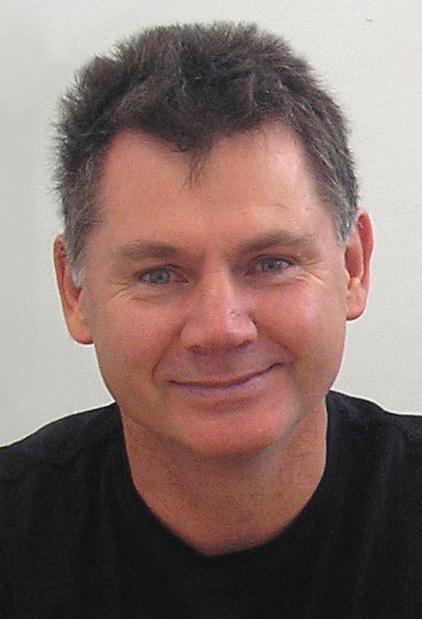
Sean O’Sullivan
Has a B Com (Hons) Otago University. In 2000 - 2001 introduced PCs on the workshop floor and job and staff tracking and a productivity software App to Fletcher Aluminium Group and 100 manufacturers NZ nationwide.
Founding Director Empower Workshop Productivity & Scheduling Software App.

Johnathan Prince
Jonathan Prince is a Director at Caliber Design, a project-based mechanical engineering consultancy with engineers all around the country. With a background in product commercialisation, sustainable design, and business strategy, Jonathan is passionate about helping Kiwi companies turn ideas into reality and building engineering capability within New Zealand Inc.

Adam Sharman
Is CEO at LMAC for the APAC region. With a background in technology implementation, manufacturing and strategy, Adam and the team at LMAC are on a mission to transform manufacturing productivity by combining expertise in operational excellence, manufacturing digitisation and strategy definition and delivery.
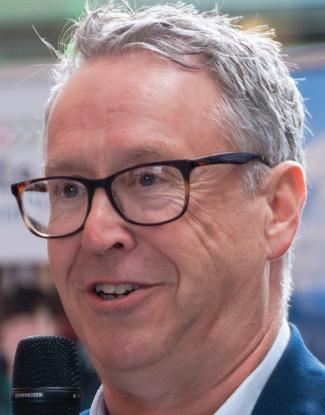
Patrick McKibbin
CEO – Hutt Valley Chamber of Commerce
Patrick joined the Hutt Valley Chamber of Commerce in September 2021. His passion is identifying and connecting with manufacturing & technology businesses, other businesses, local government, central government and industry associations.
By Dr. Troy Coyle, CEO, HERA
The construction industry is undergoing a major transformation thanks to new digital technologies, a shift often called Construction 4.0. Inspired by the smart technologies that revolutionised manufacturing, these innovations are now changing how buildings and infrastructure are designed, built, and managed.
This overview highlights some of the key technologies shaping this change and considers their potential for New Zealand’s construction sector.
The emerging technologies research theme of HERA’s Ngākopa Construction 4.0 project, led by Prof Robert Amor from the University of Auckland, aims to identify the technologies that can support a transition to construction 4.0.
Building Information Modelling (BIM) is a way of creating detailed 3D digital models of buildings that everyone involved in a project can use. Instead of relying on flat blueprints, BIM lets architects, engineers, and builders work from the same interactive model, reducing mistakes and improving teamwork.
It also helps plan costs, timelines, and even assists with managing buildings after construction.
The Internet of Things (IoT) connects sensors, tools, vehicles, and even workers on a construction site, collecting real-time information about everything from weather conditions to equipment status. This data helps managers improve safety, avoid delays, and make better decisions by keeping track of what’s happening on site at all times.
Augmented Reality (AR) allows project teams to view digital designs overlaid onto the real world using mobile devices or special glasses. This makes it easier to spot design problems early, estimate costs accurately, and manage quality directly on site.
Knowledge-based systems use smart computer programs to analyse risks, project timelines, and safety issues, helping teams make better decisions by understanding complex data and uncertainties.
Computer vision uses cameras and drones to watch construction sites, automatically spotting safety risks or structural defects faster and more accurately than manual inspections. By combining visual data with AI, it can track progress and flag potential problems in real time.
Digital Twins create a virtual version of a construction project or asset that updates continuously with

real-world data. This helps teams simulate different scenarios, optimise workflows, and spot issues before they happen, leading to safer and more efficient building processes.
3D printing is being used to build complex shapes and parts of structures that would be difficult or wasteful with traditional methods. It offers environmental benefits by reducing material waste and can speed up construction, though it is still growing in its use on large-scale projects.
4D printing takes this a step further by producing materials that can change shape or adapt in response to heat, moisture, or other conditions, opening up exciting possibilities for smarter, more adaptable buildings.
Smart robotics are increasingly handling tasks such as bricklaying, demolition, or aerial site inspections. These robots can perform repetitive or dangerous jobs faster and more precisely, helping to address labour shortages and improve safety.
Natural Language Processing (NLP) helps computers understand and summarise large amounts of written information, such as safety reports. This can identify patterns in incidents or risks that might otherwise be missed.
Process mining analyses digital records of project activities to identify delays, bottlenecks, or inefficiencies. This data-driven approach allows managers to optimise workflows and improve collaboration.
Information fusion combines data from multiple sensors and sources to give a clearer, more complete picture of what’s happening on a site, helping to detect risks and make better decisions.
Blockchain technology provides a secure, transparent way to record transactions and share information among all project partners, reducing disputes and automating processes like payments through smart contracts.
Many of these technologies are even more powerful when combined. For example, a digital twin can incorporate data from BIM models, IoT sensors, and computer vision systems to give a live, detailed picture of a project’s status.
Robots and drones can gather visual data feeding into AI systems that monitor safety and progress. Together, they create a smart, connected construction environment that improves efficiency, safety, and sustainability. Construction 4.0 requires the following:
• inter-operable systems;
• real time data connectivity; and
• Automated workflows and decision support across the lifecycle of a project, from design to construction and end-of-life disassembly.
What this means for construction in Aotearoa New Zealand
Among these technologies, digital twins, smart robotics, and computer vision stand out as
Adam Sharman, CEO LMAC Group APAC
Having recently spent time on the ground with our team in Europe, it has been interesting to reflect on the common trends and differing approaches to industry support across Europe.
Whilst different countries face some of their own unique challenges, priorities, constraints and policy backstops, one thing is clear; across Europe the manufacturing playbook is being rewritten.
For New Zealand manufacturing, having an eye on the commonalities and practical differences in the European markets matter as much as the headline trend words (AI, reshoring, decarbonisation).
In this article, we reflect on what’s really happening on the ground across the UK, France and Germany— and what we can learn in New Zealand.
The UK: fast-to-adopt, policy-energised, skills-constrained
UK manufacturers are pushing hard on data, AI and automation as the primary levers for productivity — driven by government programmes (Made Smarter), trade and tax incentives, and a recent policy pivot to a long-term industrial strategy that backs advanced manufacturing and skills investment.
That policy momentum is prompting many UK firms to accelerate AI/ML pilots, invest in connected-factory programmes and consider reshoring for resilience. Yet adoption is uneven: SMEs still cite awareness, skills and access to capital as the highest barriers.
Leaders should therefore prioritise scalable pilots that deliver measurable OEE (overall equipment effectiveness) gains, pair technology buys with rapid upskilling, and actively use available regional funding and schemes to lower implementation risk.
France: state-led modernisation and selective reindustrialisation
France combines a deliberately interventionist industrial policy with long-term programmes — “Industrie du Futur” and targeted investment funds — to modernise medium-sized sites and attract strategic projects (gigafactories, batteries, critical supply chains).
The French state has used subsidy schemes and coordinated “Team France” efforts to push digitalisation, decarbonisation and on-shoring where it judges national interest. For leaders, that means attractive grant opportunities and a predictable policy partner when projects align with
particularly promising for Aotearoa New Zealand’s construction industry right now.
They can help tackle common challenges such as labour shortages, safety risks, and the need to build more sustainably and cost-effectively.
Digital twins support better planning and resource use, aligning well with Aotearoa New Zealand’s goals for economic resilience and environmental responsibility. Robotics can automate labour-intensive
national priorities (strategic supply, green tech). But firms must be ready for tighter regulatory expectations around sustainability and local content, and they should design proposals that tie productivity, jobs and decarbonisation into one business case.
Germany: technologically advanced but squeezed by energy and export headwinds
Germany remains a global leader in automation, machine tools and platform-driven Industry 4.0 practices, backed by a dense supplier ecosystem and standards work. Yet its sector has faced a tougher macro picture: weak export demand, high energy costs for energy-intensive production, and cyclical weakness in autos and capital goods have constrained investment and output.
Policymakers and industry platforms continue to push digital standards and decarbonisation measures, but many firms are shifting CAPEX toward energy efficiency and supply-chain diversification rather than large scale expansion.
For leaders, the German lesson is that excellence in engineering and process innovation is necessary but not sufficient — energy strategy (contracts, flexibility, local generation) and market diversification are now core strategic priorities.
Digital + people = the activation equation. Across all three countries, leaders report that tech alone doesn’t deliver value unless paired with new operating models and skills pipelines.
Targeted training, short-cycle pilots and metrics that tie digital projects to margin or lead-time wins are non-negotiable.
Resilience beats lowest-cost sourcing. Geopolitical risk and logistics fragility have made reshoring/ nearshoring options commercially viable — but only when combined with automation to offset higher labour or energy costs.
Decarbonisation is now a cost and a market filter. Energy transition policies and corporate buyers are pushing manufacturers to invest in emissions

reduction; those that lead will win contracts and finance more easily, but the short-term burden is material — especially in Germany.
The energy transition also opens product-market opportunities (green steel, battery systems, circular services).
Take a data-driven approach to prioritisation: using analysis of production and enterprise data, shortlist 3–5 projects (one productivity, one resilience, one sustainability), estimate payback, and secure an executive sponsor.
Make energy strategy part of manufacturing strategy: procure flexible tariffs, evaluate on-site generation and demand-response, and model product margins under different energy scenarios.
Invest in modular workforce programmes: micro-credentials, apprenticeships, and industry partnerships that convert tech pilots into repeatable capability across sites.
Invest in AI to support agility and rapid analytics: Pick a practical use case, experiment with agentic AI tools to address the use case and use the use case to build capability.
The UK is prioritising agility and strong policy tailwinds for digital adoption; France is prioritising direct state support for targeted modernisation and strategic projects; Germany is developing the deepest engineering ecosystem but faces near-term macro and energy headwinds.
For New Zealand’s manufacturing ecosystem, organisations and government shouldn’t bet on one “best” approach — a combination of prioritise, including digital experiments and AI like the UK; state-supported strategic plants like in France; engineering-intensive exports and energy-efficient modernisations like in Germany to support cross-border resilience in supply footprint.
and hazardous tasks, improving productivity and safety.
Computer vision offers precise, automated monitoring that helps reduce waste and manage complex sites, especially in varied terrains.
While other technologies like augmented reality, 4D printing, and blockchain show potential, they are still developing and need more time and investment before widespread use.
Digital innovation is reshaping construction in exciting ways. Technologies like BIM, IoT, AI, and robotics are helping make building safer, faster, and greener. For Aotearoa New Zealand, embracing these tools offers a clear path to a stronger, more sustainable construction industry that meets future challenges with confidence and skill.
By Chris Penk, Minister for Small Business and Manufacturing
Among the many things I’ve come to appreciate in this job is just how challenging it can be to run a small business in New Zealand’s regulatory maze – no matter the industry.
In the wise words of our Prime Minister, “we can have more growth, more exports, more jobs, and higher wages for every New Zealander – we just have to say yes to letting it happen.”
It’s clear to me that, like so many other businesses, manufacturers want to spend more time making things and creating jobs, and far less time buried in paperwork.
Too often businesses tell me unclear or outdated regulations stand in the way. For example, machine guarding rules can clash with food safety standards, or exposure limits might fail to reflect the real risks on the ground.
Many manufacturers have faced the frustrating reality that rigid rules cost time, money and productivity – without always delivering better safety outcomes.
That’s why this Government is pushing ahead with work to clear out the sticky red tape that gums up the works.
I want to acknowledge my colleague, Workplace Relations and Safety Minister Brooke van Velden, who has spent recent months engaging with manufacturers across the country.
From sawmills to commercial bakeries, businesses have been upfront with Minister van Velden, as they have been with me, about the frustration of navigating grey areas and impractical requirements that tie them in knots.
One example that stands out came from a business owner who shared how identical machine guarding passed inspection by WorkSafe in Auckland yet failed in Christchurch.
When the same piece of equipment is treated differently depending on who shows up on site, it’s obvious something needs to change.
We’re taking that feedback seriously. Outdated machine guarding rules are being simplified to keep workers safe without piling on endless compliance costs.
Workplace exposure standards are also under review for things like softwood dust, hardwood dust, welding fumes and flour dust. These rules must protect workers’ health and be practical, measurable and aligned with how modern businesses operate.
It was a submission from commercial bakers, shared

through the Government’s Red Tape Tipline, which sparked WorkSafe’s move to review the Workplace Exposure Standard for flour dust. Bakers warned that the current limit is so strict it risks shutting down businesses altogether. One bakery spent millions retrofitting air conditioning, buying new industrial vacuums, and ramping up deep cleaning – yet still found it almost impossible to comply.
Costs like these flow through the entire supply chain and push up prices at the checkout. At a time when some families feel the pinch just buying a loaf of bread, that’s simply unacceptable.
Our goal is to get these settings right so businesses can trust they’re working to clear, sensible rules –without second-guessing inspectors or shelling out for endless workarounds. This is part of a wider effort to bring back New Zealand’s practical, can-do spirit.
When businesses have certainty, they’re more likely to invest, grow their teams and deliver better products at better prices.
The online tipline gives every Kiwi a way to shine a light on pointless, confusing or outdated rules. We want to hear from manufacturers about the other regulatory headaches slowing them down.
If you’re reading this and have an example, I encourage you to jump online and share it.
New Zealand manufacturers already do extraordinary things every day. Our job is to back them – not bind them up in barriers. By putting common sense at the heart of the rules, we hope to help local businesses keep Kiwis in good jobs for years to come.
Fiona Schroeder, General Manager, South Waikato Precision Engineering.
How are you finding current business conditions?
Business has been tough over the last 12 months, across the board, our customers have been “down” and experiencing lower demand.
However, it would seem there are some green shoots which will hopefully mean that we have hit the bottom and are now looking forward to a period of gradual growth.
What are the main activities of your company?
South Waikato Precision Engineering is a manufacturing engineering business.
We design and manufacture KNAPP spreader bars, lifting beams, man cages, skid steer attachments and excavator attachments including thumbs.
We also manufacture parts for other New Zealand Manufacturers. With 11 CNCs and offline programming, we machine a wide variety of precision parts including tooling steels.
We also have fabrication and welding, giving us the capability to manufacture welded parts that require machining in one place rather than having to use two separate suppliers.
Our assembly team assemble manufactured parts into sub-assemblies for customers to streamline their manufacturing production.
Where are future opportunities for growth, for your company?
From a production manufacturing perspective, South Waikato Precision Engineering is partnering with New Zealand manufacturers to produce parts and provide sub-assemblies with the goal to reduce production costs and increase efficiencies to ensure our customers remain competitive in the global market.
We believe this approach of assisting our manufacturing customers to reduce costs and use an external supplier to change fixed costs to variable costs will continue to create opportunities for growth both for South Waikato Precision Engineering and our customers.

For our own products, KNAPP has the largest range of certified spreader bars and lifting beams available in New Zealand with growing demand from Crane and Hiab companies, manufacturers and warehouses that require compliant, certified lifting equipment.
We also see growth in opportunities with KNAPP excavator and skid steer attachments from the agricultural and construction industries.
How do you find staff recruitment at present?
As with most businesses, we have found staff recruitment to be more challenging since Covid. Fortunately, as we have a very stable staff, staff recruitment requirements have been rare over the past few years as we have very low staff turnover.
As the business grows, our intention is to recruit and train apprentices to future proof the business going forward and maintain our high-quality standards.
Do you export?
South Waikato Precision Engineering operates predominantly in the domestic New Zealand market. However, we supply many New Zealand manufacturers who export overseas.
South Waikato - what is the entrepreneurial spirit like?
South Waikato is an entrepreneurial region with many manufacturing and engineering businesses in the forestry and agricultural industries that have grown to become large employers.
South Waikato Precision Engineering has followed in the same spirit creating our own range of KNAPP products including certified spreader bars and lifting beams, man cages, excavator and skid steer attachments.
What one thing would make business better for you?
Confidence and certainty in overseas markets and trade conditions resulting in increased demand for New Zealand manufacturers which will, in turn,
files for CNC 3D Design Solid Modelling



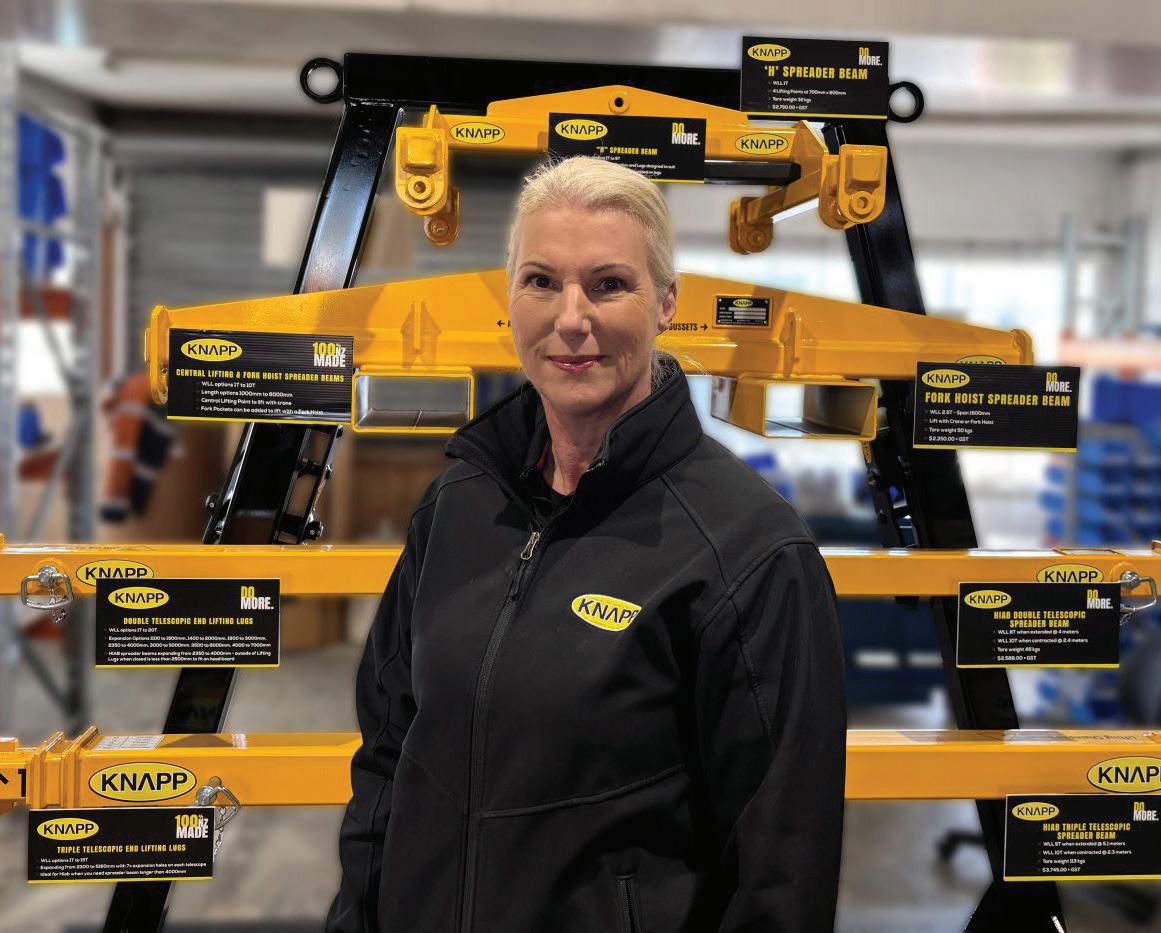
Advertising Booking Deadline – 4 September 2025
Advertising Copy Deadline – 4 September 2025
Editorial Copy Deadline – 4 September 2025
Advertising – For bookings and further informa
Media Hawkes Bay Limited 027 348 1234 Articles to be sent to: publisher@xtra.co.nz www.nzmanufacturer.co.nz

and print prototypes and producon parts.


Getting started with your carbon footprint doesn’t have to be complicated. Manufacturers across New Zealand are already sitting on one of the most powerful tools for understanding their emissions: their financial data.
Spend-based emission factors turn dollars spent into practical emissions estimates, providing you with a fast, accessible way to start measuring and managing your impact. They’re especially helpful for scope 3 emissions from your supply chain, which are typically the hardest to track but often make up the biggest part of your footprint.
In this article, we explain what spend-based emission factors are, how you can use them in your business, and where to find the most accurate and up-to-date data for New Zealand.
What are spend-based emission factors?
Spend-based emission factors are a type of emissions data that connect greenhouse gas emissions with how much money you spend on goods and services. They express emissions as kilograms of carbon dioxide equivalent (CO -e) per dollar spent (kg CO -e/$).
They’re calculated using environmentally-extended input-output (EEIO) models. These models look at the total emissions of a sector (like “fabricated metal products” or “office furniture”) and divide this by the total revenue of that sector. The result is an average emissions intensity per dollar.
In simple terms, they give you a ballpark figure: if you know how much you spent in a certain category, you can estimate the emissions that came with it.
Spend-based emission factors are especially helpful when:
➙ You don’t have access to physical data (like litres of fuel or kilograms of steel)
➙ You need an emissions estimate based on financial records
➙ You’re starting your emissions reporting and want to cover as much ground as possible
➙ You want to identify emissions hotspots in your supply chain before doing a deeper dive.
They’re widely used for:
➙ Scope 3 reporting (especially for purchased goods and services and financed emissions)
➙ Understanding emissions from procurement and investments
➙ Estimating your personal or household carbon footprint
Let’s say that in the 2024-25 financial year your business spent:$100,000 on construction services: Using an emissions factor of 0.206 kg CO -e per dollar, this equates to 20,600 kg CO -e. $10,000 on software subscriptions: With a lower emissions factor of 0.077 kg CO -e per dollar, this works out to 770 kg CO -e.$50,000 on imported electronic components:
These may have a different emissions profile depending on where they’re sourced. A factor of 0.140 kg CO -e per dollar gives 7,000 kg CO -e.These estimates help you understand where emissions are likely to be high so you can focus your efforts on what matters most.
Spend-based emission factors are best used as a stepping stone, not the final destination.
Think of them as a practical tool to start measuring and managing your emissions when you’re missing detailed data. Over time, you can replace them with more accurate activity-based or supplier-specific data where it matters.
They’re also helpful as a gap filler. For example, you might have high-quality data for major inputs (like electricity or fuel), but little detail for indirect costs (like professional services or IT). Spend-based factors help you cover these smaller items without making the data collection process too complicated.
Tips for using them effectively:
➙ Be transparent about your methods and explain when and why you’ve used spend-based data.
➙ Refine over time and improve your data where it makes the biggest impact.
Trans-Tasman sustainability firm thinkstep-anz has developed a set of spend-based emission factors tailored to the New Zealand economy. They’re built
using local data from Statistics New Zealand, the Ministry for the Environment, and the Reserve Bank of New Zealand.
For imports, we use a global database (Eora) to model emissions from overseas supply chains.
The latest (2025) release includes:
➙ Industry-level factors: for spend aligned to economic sectors (excluding taxes and retailmargins)
➙ Commodity-level factors (basic prices) – for purchases direct from producers
➙ Commodity-level factors (purchaser’s prices) –for retail transactions including GST andmargins
Free vs commercial access
There are two licence options:
➙ The free licence gives you access to industry and commodity emissions factors for 2018 and 2021. It’s great for internal use, with peer-reviewed data.
➙ The commercial licence includes everything in the free version, plus additional years (2022 and 2023), audited data (for 2023), customer support and the ability to integrate with software tools. It’s designed for organisations that need reliable, up-to-date data for commercial projects or digital platforms.
To download the emission factors or learn more, visit our website:
www.thinkstep-anz.com
If you have questions or need help choosing the right factors, email us at data@thinkstep-anz.com

continued from Page 1
New Zealand is poor because it chooses to be Smart manufacturing and the UK government’s industrial strategy
results, highlighting that the most transformative advances come from empowering New Zealanders to innovatively solve challenges and seize opportunities— often in surprising, unscripted ways.
“Prosperity doesn’t grow from following the script of what other Governments are doing; it emerges from innovators taking risks and building new niches.”
The closure of Callaghan Innovation and changes to science agencies will achieve little unless policy, business, and scientific leadership rally behind a new, bolder strategy. This pivotal moment calls for action:
1. Backing High-Tech manufacturing
• Shift from reliance on mature primary industries.
• Direct support toward world-class, high-value manufacturing and tech businesses.
2. Long-Term science & manufacturing investment
• Match countries like Australia and Israel not only in words, but in actual investment and coordinated strategy.
• Ensure business and academics can leverage cutting-edge R&D for commercial impact.
3. Commercialisation Partnerships
• Forge commercialisation models where both businesses and research organisations genuinely benefit.
• Move beyond short-term, low-risk projects to support ventures with the potential for step-change growth.
• Ensure that Manufacturing is a key part of the new advanced technology public research office (PRO)
With five years’ experience in New Zealand’s innovation system, the pattern is clear: Quick-win, low-risk projects rarely deliver the bold transformation required. The solution?
Championing bold leadership and relentless adoption of new technologies. In the workplaces where this happens, teams are energised and engaged—and businesses become both more profitable and sustainable.
call to
Every encounter with a Government Minister is a chance to advocate for the future of New Zealand manufacturing. Here are focused questions to elevate the conversation:
• What long-term strategies does the Government have to strengthen and grow the manufacturing sector in New Zealand?
• Is the recent investment boost enough to truly improve productivity, or are further policy measures targeting productivity needed for lasting impact?
• With a projected shortfall of 23,323 manufacturing employees by 2028, how will government policy address workforce shortages?
Staying informed and asking these critical questions can help ensure that government policy aligns with the real needs of New Zealand manufacturing and drives the necessary transformation.
Hanga-Aro-Rau Workforce Development Council & Deloitte, “Post COVID-19 Workforce Development Needs in New Zealand’s Manufacturing and Engineering Sectors” (2022).
OECD Science, Technology and Innovation Outlook 2023
continued from Page 1 widely welcomed.
The Industrial Strategy features investment in specialist advisory services and organisations to increase technology and robotics adoption across advanced manufacturing. But the big question is now whether it will deliver the change that manufacturers are hankering for, especially in relation to smart manufacturing.
Central to the Advanced Manufacturing Sector Plan is a push to scale the adoption of robotics, data, and advanced digital technologies. While cutting-edge automation and predictive AI are becoming more accessible, many manufacturers, particularly SMEs, still lack the maturity or infrastructure to implement them.
The Industrial Strategy aims to bridge this gap, announcing a new Robotics and Autonomous Systems (RAS) programme, backed by an initial investment of £40 million. This will establish a new network of Robotics Adoption Hubs –physical centres with the expertise, equipment, and connections to accelerate firms’ adoption of robotics. These will be designed as a ‘one-stop shop’ to help end-users invest in RAS technologies in a safe, low-risk environment. However, smarter manufacturing also needs to be backed by operational visibility and a strong data foundation. Here’s how manufacturers can embark on this journey successfully:
Manufacturers first need sight of their core operational metrics to define and monitor performance. After all, you cannot improve what you don’t measure.
Many manufacturers still rely on paper-based reports and inconsistent metrics, making it hard to compare shifts or pinpoint problems. Without operational visibility, actions tend to be reactive and retrospective. Perhaps a shift has underperformed, but without reliable data, it’s impossible to identify the cause.
The first step is defining consistent metrics across all shifts, such as operatives per line, output per line, downtime reasons, or quality defects. Even simple tools like whiteboards or spreadsheets can instil the habit of consistent data capture and begin building a mindset of continuous improvement. The input might be manual and prone to human error, but it provides a common point of reference and highlights areas needing further insight.
Capturing data in an automated format is inherently more reliable, as it doesn’t require human interpretation. Data such as scan times, equipment health and performance, and employee clock-in and out times can feed into visualisation tools like Power BI or Grafana, helping to spot trends and anomalies over time. Data is ideally stored in a data warehouse to allow for secure deposit and retrieval in a structured
format. Layering information from different sources can reveal patterns. For example, does the mechanical equipment perform consistently at all hours? Are reworks linked to break times? Organisations may spend longer in this phase retrieving, cleansing, and analysing data, but it’s a vital foundation for future analytics.
One of the defining features of smarter manufacturing is being able to predict what’s happening next and act on it; and predictive analytics can bring this to the factory floor. With knowledge of trends, organisations can begin to form corrective courses of action, strategies of intervention, and avoid downtime. For instance, if the data shows that breakdowns spike after 100 hours of runtime, repairs and servicing can be scheduled in advance. Or, if absenteeism spikes after bank holidays, extra staff can be rostered.
At this stage, it is assumed the organisation has a strong data foundation. Prescriptive analytics recommends specific actions based on historical feedback loops: detecting a trend, initiating a response, and measuring its effectiveness. By combining data sources, like weather, complaints, and inbound profiles, organisations can run probability-based models to suggest specific checks or actions. However, human judgment is still required to execute or validate these suggestions. To build trust, models should offer tracing to help users understand why a decision has been made.
At this final stage, responses are automated, based on high confidence in the data and models. Trust in data is key to achieving full insights maturity. Getting here has likely taken time, learning, and refinement, and as a result, can be relied upon with little human intervention. Like Google Maps rerouting you in real-time around traffic, self-optimising systems react instantly to disruptions – the user only needs to accept or decline the suggestion.
A “human-in-the-loop” retains a level of control, but decisions can be made in seconds. While full automation across the value chain is ambitious, it can be prioritised in high-value areas.
While the Industrial Strategy is welcomed with open arms by most in the industry, success still depends on people as much as policy. While the journey is data-driven, people are the linchpin to progress, or the lack of it.
Resistance to change is common. Humans cannot process large volumes of data as effectively as a machine can, but their insight is vital for interpreting results and providing context. Ultimately, the most effective smart manufacturing journeys have a perfect blend of human intuition with machine intelligence.
This year’s 2025 KiwiNet Research Commercialisation Awards celebrate 18 exceptional finalists leading the charge in turning bold ideas and scientifc discoveries into real-world breakthroughs.
These pioneers are translating cutting-edge research from universities, Crown Research Institutes, and research organisations into powerful technologies, thriving businesses, and tangible economic benefits for Aotearoa and beyond.
The KiwiNet Awards shine a spotlight on New Zealand’s deep tech talent - research entrepreneurs, innovators, and commercialisation professionals.
This year’s diverse finalists include innovations such as a portable stroke detection device, a biological forecasting platform for marine farmers, sustainable haircare tablets, a university course guidance platform, space technology, skin cancer diagnostics technology, and plant and food breakthroughs ranging from hops to potatoes.
Other highlights include marine biofuel, clean-tech innovations, animal vaccination technologies, a breakthrough drug for depression and anxiety, decarbonised metal refining, wearable health tech, and CAR-T therapy breakthroughs for cancer treatment.
KiwiNet CEO Dr James Hutchinson says, “These finalists represent the cutting edge of innovation, turning world-class science into high-value, high-growth ventures with real impact for New Zealand.
“From pioneering medical treatments to clean tech, sustainable food production and space innovation, they show how science can tackle real-world challenges — growing our economy, boosting productivity, and doing good in our communities.
“The KiwiNet Awards highlight the powerful returns delivered by research commercialisation, with every $1 invested in PreSeed Accelerator Funding generating $13 in economic value for Aotearoa.”
The 2025 KiwiNet Research Commercialisation Awards finalists are:
Momentum Student Entrepreneur Award

• Emmalee Abbott Joe – FROTH/ Te Whare Wānanga o Waitaha | University of Canterbury: Making travel more sustainable, one haircare tablet at a time
• Josiah Bugden – CourseSpy/ University of Otago
– Otakou Whakaihu Waka: Creating transparency in higher education
• Jade Luxton – Steerineedle/ Te Whare Wānanga o Waitaha | University of Canterbury: The holster revolutionising livestock vaccinations
Breakthrough Innovator Award
• François-Xavier Collard – Scion, a group of the Bioeconomy Science Institute: Pioneering biofuel for a greener maritime future
• Dr Patricia Rubio-Reyes – Malaghan Institute of Medical Research: Improving cell therapy control to fight cancer
• Dr Ben Mallett – The MacDiarmid Institute, Wellington UniVentures, Paihau Robinson Research Institute: Propelling New Zealand to the frontiers of deep space
• Professor Paul Glue – University of Otago – Otakou Whakaihu Waka: Pioneering impact for mental health
• Dr Michel Nieuwoudt – Waipapa Taumata Rau, University of Auckland/ Luminoma Ltd: Making light work of hard problems
• Professor Aaron Marshall – Te Whare Wananga o Waitaha | University of Canterbury/ MacDiarmid Institute: An inspiring visionary in clean-tech innovation

Looking for a marketing edge?

70% of licence holders say signing on has positively affected sales.
KCA Commercialisation Professional Award
• Sue Muggleston – Plant & Food Research, a group of the Bioeconomy Science Institute: A legacy of IP excellence and growing future leaders

• Arron Judson – Symply/ New Zealand College of Chiropractic: Building capability, not just companies

• Amanda Davies: Scion, a group of the Bioeconomy Science Institute: Forging pathways to turn science into impact
• Wellumio – Wellington UniVentures: Lifesaving stroke imaging when every second counts
• CAR-T Therapy – Malaghan Institute of Medical Research: Engineering the future of cancer care in New Zealand
• Ocean Intelligence – Cawthron Institute: Forecasting the future of marine farming
AJ Park Commercialisation Impact Award

• Zincovery and Te Whare Wananga o Waitaha | University of Canterbury: Leading the future of clean metal refining
• Potato Innovation ‘Crop 78’ – Plant & Food Research, a group of the Bioeconomy Science Institute: A sustainable French fry future
• Nectaron® and Plant & Food Research, a group of the Bioeconomy Science Institute: Next-generation flavours brewing global success
The 2025 KiwiNet Awards judging panel comprises Greg Sitters - Managing Partner at Mat Group; Melissa Yiannoutsos - Innovation Fund Manager, Booster NZ; Nadine Williams - CE & Founder, Instinct Lab NZ; David Beard - Partner at Movac; Adiraj Gupta - Entrepreneur & Founder, Sendd.
The Kiwi Innovation Network (KiwiNet) is a consortium of universities, Crown Research Institutes, an Independent Research Organisation and a Crown Entity established to boost commercial outcomes from publicly funded research by helping to transform scientific discoveries into new products and services.
The 2025 KiwiNet Awards are supported by MBIE, PwC NZ, Sprout Agritech, BNZ, KCA, Campus Plus and AJ Park, as well as Return On Science, Momentum, and the sponsors of the Momentum Student Entrepreneur award, Icehouse Ventures, Angel Association and Emerge.
This year, the KiwiNet Awards will be held alongside the inaugural Auckland Startup Week, which will shine a spotlight on the people, ideas and companies building New Zealand’s global reputation for innovation. KiwiNet Awards winners for 2025 will be announced at an evening reception on 22 October.
• Emmalee Abbott Joe – FROTH/ Te Whare Wānanga o Waitaha | University of Canterbury: Making travel more sustainable, one haircare tablet at a time
• Josiah Bugden – CourseSpy/ University of Otago – tākou Whakaihu Waka: Creating transparency in higher education
• Jade Luxton – Steerineedle/ Te Whare Wānanga o Waitaha | University of Canterbury: The holster revolutionising livestock vaccinations
• François-Xavier Collard – Scion, a group of the Bioeconomy Science Institute: Pioneering biofuel for a greener maritime future

• Dr Patricia Rubio-Reyes – Malaghan Institute of Medical Research: Improving cell therapy control to fight cancer
• Dr Ben Mallett – The MacDiarmid Institute, Wellington UniVentures, Paihau Robinson Research Institute: Propelling New Zealand to the frontiers of deep space
• Professor Paul Glue – University of Otago – Otakou Whakaihu Waka: Pioneering impact for mental health
• Dr Michel Nieuwoudt – Waipapa Taumata Rau, University of Auckland/ Luminoma Ltd: Making light work of hard problems

• Professor Aaron Marshall – Te Whare Wānanga o Waitaha | University of Canterbury/ MacDiarmid Institute: An inspiring visionary in clean-tech innovation
• Sue Muggleston – Plant & Food Research, a group of the Bioeconomy Science Institute: A legacy of IP excellence and growing future leaders
• Arron Judson – Symply/ New Zealand College of Chiropractic: Building capability, not just companies
• Amanda Davies: Scion, a group of the Bioeconomy Science Institute: Forging pathways to turn science into impact
• Wellumio – Wellington UniVentures: Lifesaving stroke imaging when every second counts
• CAR-T Therapy – Malaghan Institute of Medical Research: Engineering the future of cancer care in New Zealand
• Ocean Intelligence – Cawthron Institute: Forecasting the future of marine farming
• Zincovery and Te Whare Wananga o Waitaha | University of Canterbury: Leading the future of clean metal refining
• Potato Innovation ‘Crop 78’ – Plant & Food Research, a group of the Bioeconomy Science Institute: A sustainable French fry future
• Nectaron® and Plant & Food Research, a group of the Bioeconomy Science Institute: Next-generation flavours brewing global success
IBASE Technology Inc., a leading provider of industrial panel PC and embedded computing solutions, has introduced the MBB1005, a robust ATX motherboard crafted for industrial edge computing, AI acceleration, and automation platforms.
Powered by Intel® Core Ultra 200S processors on the LGA1851 socket, this board delivers outstanding compute performance, modular expansion, and rugged reliability, enabling OEMs to scale up fast in industrial and embedded markets.
The MBB1005 offers four DDR5 U-DIMM slots, supporting up to 192GB memory. Its integrated graphics controller supports one HDMI 2.0b and three DisplayPort 1.4a outputs, enabling multi-display configurations essential in industrial monitoring.
Networking is handled by dual Intel 2.5GbE ports—the I226LM with iAMT 19.0 for remote maintenance and the I226V for
standard communication. For storage and modular expansion, the board offers four SATA III ports and four M.2 slots: two M-Key (2280) for NVMe, one B-Key (3052) for cellular modules, and one E-Key (2230) for WiFi or Bluetooth.
It offers rich expansion with one PCI-E x16 Gen5, two PCI-E x4 Gen4, one PCI-E x1 Gen4, and two legacy PCI
slots for add-on cards or signal processing hardware. I/O resources include five USB 3.2 Gen2 ports, two USB 3.2 Gen1 ports via box header, two USB 2.0 and four COM ports (two RS232/422/485 and two RS232 only).
For audio, the board integrates Realtek ALC888S, providing 5.1-channel HD output for applications requiring voice or sound feedback. For enhanced reliability, the board includes a 256-level watchdog timer, digital I/O (4-in/4-out), TPM 2.0, and iSMART 4.0 for power management and remote control. System health monitoring is enabled by the Fintek F81964D-I controller.

Measuring 305mm x 244mm, the standard ATX form factor ensures easy integration. With powerful specs and extensive I/O, the MBB1005 sets a new benchmark for scalable industrial motherboards.
Sustainable material igumid CG LW offers comparable mechanical specifications at the same price as the previous E2.1 series
Following the successful development of the world’s first energy chain made from recycled plastic, motion plastics specialist igus is taking the next step: the company is converting the entire catalogue range of its standard energy chain series E2.1 to the new recycled material igumid CG LW.
The European Union wants to establish a circular and climate-neutral economy by 2050 at the latest. Instead of producing waste, a functioning circular economy relies on the “cradle-to-cradle” concept. Consumables are returned to the natural and technical cycle so as to conserve valuable resources and raw materials.
With the E2.1 energy chain series, which will be completely converted to recycled material this spring, igus shows that this is no longer a dream of the future. The company is taking this step after introducing the first energy chain made from recycled material in 2022.

The energy chain series is now manufactured from the recycled material igumid CG LW. It consists of post-consumer recyclate, e.g. old fishing nets, and discarded energy chains, which are recycled and processed into recyclate as part of the in-house “Chainge” programme.
The energy chains made from the sustainable material not only have mechanical specifications that are comparable to those of standard chains, but are also available at the same price as the previous E2.1 series. Even in terms of wear behaviour, stability and continuous flexing cycles, the energy chains offer the same quality.
The series is characterised by a long service life, particularly quiet operation and easy filling and installation. “With this recycled chain series, we are enabling customers to make a contribution to the circular economy for plastics together with us,” says Jörg Ottersbach, Head of Business Unit e-chains at igus. “By switching to igumid CG LW, we are demonstrating that circular economy and cost-effectiveness are by no means mutually exclusive.”
By opting for the E2.1 series, customers are making
an important contribution to the sustainable production of the future. Compared to the standard material, the recycled material has an 80% lower CO2 footprint. igus itself is also driving forward its sustainability measures with the new products. The company is focussing on measures in all areas (Scopes 1 to 3), from using process heat and green electricity to adding more e-charging stations to modernising buildings.
As part of the “Chainge” programme, igus has been taking back end-of-life energy chains from all manufacturers since 2019. In 2022, an online platform was added to the recycling initiative, through which customers can also recycle other components made of technical plastics while purchasing processed material in the form of regrind and regranulate.
In addition to taking back old energy chains, igus also takes back old material as part of assembly orders. Around 170t of plastic have already been recycled via the “Chainge” platform. For its recycling programme, igus was awarded the Rhineland Business Prize in the sustainability category (2022) and took first place in the “Going Circular” recycling competition organised by the Cologne Chamber of Industry and Commerce (2023).
www.treotham.com.au
The ARS200 is a rugged, waterproof all-in-one outdoor computer engineered for high-reliability performance in extreme conditions.
Purpose-built for mission-critical applications, the ARS200 combines durable industrial-grade hardware with exceptional environmental resilience, making it ideal for smart transportation, traffic monitoring, industrial automation, outdoor digital signage, and energy infrastructure deployments.
Powered by Intel® 14th/13th Gen Core™ U-series processors and supporting up to 64GB of DDR5-5600 memory, the ARS200 offers excellent computing performance with energy efficiency. Its modular design supports multiple M.2 slots for wireless and storage expansion, and includes rich I/O options such as dual 2.5GbE LAN, dual CANbus, and a SIM slot for 4G/5G LTE connectivity.
Built with an IP65-rated fanless enclosure, the ARS200 is protected against water, dust, and harsh weather conditions. It operates reliably across wide
temperature ranges from -20°C to 70°C, ensuring 24/7 performance in both hot and cold outdoor environments.
To support deployment in diverse field applications, it accepts a wide-range 12V~24V DC input and is equipped with built-in protections against over-voltage, under-voltage, and reverse polarity.
This ensures system stability even in environments with unstable power, high humidity, or limited airflow.
The ARS200 is engineered for rugged edge computing applications requiring long-term durability and uninterrupted operation.
It enables industries to bridge the gap between reliable computing infrastructure and
real-world operational challenges, driving smart city initiatives, supporting mission-critical transportation and logistics systems, and empowering operators with the confidence to deploy in the harshest environments, knowing their systems are built to endure the toughest conditions.

Exel Composites has released a new whitepaper to update the transmission and distribution industry on advances in composite conductor core technology. The pultrusion leader draws on multiple reference cases with conductor manufacturers and transmission system operators (TSO) to show the opportunities
that reconductoring existing power lines with carbon fiber cores brings to ageing grids globally.
The whitepaper analyses and quantifies the benefits of high temperature, low sag (HTLS) conductor against the condition of the world’s electrical transmission infrastructure. Over 40 per cent of Europe’s grids are more than 40 years old, while more than 50 per cent in North America exceed 30 years of age.

Heini Kloster and Antti Hassinen, the authors of the whitepaper, are the product manager for conductor cores and the senior manager for product management at Exel Composites respectively.
To help drive development and contribute to conversations around this grid-enhancing technology, the two are active members of organisations such as The International Council on Large Electric Systems (CIGRE) and the
International Electrotechnical Commission (IEC).
In late 2024, Hassinen and one of the IEC Technical Committees (TC 7) published the Technical Specification 62818-1, which provides a unified testing and qualification framework for composite conductor cores, independent of the structural design of the core.
This gives TSOs the ability to compare commercially available solutions on an even playing field, further encouraging uptake.
“We stand on the precipice of enormous change,” concluded Hassinen. “TS 62818-1, developing technologies like multi-wire carbon fiber cores, rising demand for data centers and electric vehicles, and greater need to integrate renewable energy sources all point towards major attention for composite conductor cores in coming years.”
Download the free composite conductor cores whitepaper from Exel Composites.

The CAREL Board of Directors has approved the consolidated results as of 30 June 2025, with consolidated revenues of 158,8 million, +9,4% compared to the first six months of 2024 and +11,3% at constant exchange rates.
Consolidated EBITDA amounted to Euro 58.3 million, up 9.5% compared to the first six months of 2024, representing 19% of revenues.
Francesco Nalini, Chief Executive Officer of the Group, said: “The results achieved in the second quarter of 2025 are a particular source of pride. This milestone confirms the solidity of our operating model and the Group’s ability to deliver value even in a complex macroeconomic environment.
“The performance of the period reflects a combination of differentelements. From a sectoral perspective, we have witnessed a marked recovery in the HVAC segment, particularly driven by demand in commercial air conditioning and visible signs of improvement in the residential sector (heat pumps) in the EMEA area.
“From a geographical standpoint, in addition to the
consolidation of the recovery in Europe, there is a clear strong recovery in the APAC region, where our ability to seize growth opportunities played a crucial role. Furthermore, the positive trend continues in North America, driven by strong demand related to the data centre sector and the acceleration, also in this region, of commercial air conditioning.
“Looking ahead, there remains a significant level of uncertainty, mainly linked to the developments in the geopolitical scenario. Nevertheless, the flexibility provided by our global production structure, based on the ‘local for local’ philosophy, and the constant investment in innovation and technological development allow us to confidently face future challenges and swiftly seize the opportunities that will emerge in the coming quarters”.
CAREL is one of the world’s leading manufacturers of control solutions for air conditioning, refrigeration and heating, and systems for improving indoor air quality.

Products are designed to bring energy savings and reduce environmental impact, thanks to the combination of the most advanced technologies and customised services, aimed at optimising the performance of equipment and systems.
Following Australia’s lead can stimulate local infrastructure activity.
New developments and restarting paused projects are driving positive momentum in the construction sector according to a survey by crane operator NZ Crane Hire.
The survey asked 105 customers, including leading construction companies, about their outlook for the rest of 2025 and into the first half of 2026.
A quarter (25%) of customers were anticipating their crane needs will increase and 61% expect demand to remain stable.
“ Cranes are a great barometer of construction and infrastructure activity,” says NZ Crane Hire Managing Director, Deane Manley.
“It’s not just about the number of tower cranes people can see on the city scape.They represent a very small part of the industry.
The busiest cranes are workshop gantry cranes, Hiabs on flat deck trucks, or mobile cranes operating on a wide range of projects around cities and towns.”
While the customer survey found the past year was subdued, with 77% of respondents saying their crane needs either declined (31%) or remained the same (46%), the data indicates a shift in momentum in the construction industry.
“After a lean few years, it’s great to hear customers talking more positively about opportunities for growth and increased productivity in the sector which is key to driving new projects and finishing projects that had stalled.”
Mr Manley says the data and sentiment is in keeping with NZ Crane Hire’s pipeline of confirmed and potential work in the next year.
While several respondents noted the market was still
“tough”, there were hopes of a rebound, especially in commercial builds, infrastructure and large-scale residential work.
It’s a view shared by Spiral Drillers Managing Director Jon Faber, who says after an incredibly tight period, he’s cautiously optimistic about the next 12 months.
“ Right now, the market remains incredibly tight and highly competitive. While it’s encouraging to see some signs of renewed interest, particularly in the form of more requests for pricing and discussions around future commercial and infrastructure projects, this hasn’t yet translated into confirmed work for us.”
Faber says cash flow is still tight across the entire sector, with many businesses operating on razor- thin margins and unpredictable workloads increasing the risk of liquidations and skilled tradespeople leaving for the greener pastures of Australia.
“ After several tough years, the industry has been cut to the bone. Unless a stable pipeline of work returns soon, we risk losing the capability needed to deliver once the work does arrive,” Faber says. “
We’re hopeful that over the next 6 to 12 months, momentum will build into stronger pipelines as key projects are greenlit. If those larger projects get the go- ahead, the industry is ready to respond, but we need more than promises. We need decisions, and we need them sooner rather than later.”
Manley, who is also President of the Crane Association of New Zealand (CANZ), says this caution is running through the industry.
“Even among those predicting growth, the uncertainty is understandable given industry volatility and economic pressures continue to persist
because of interest rates and labour shortages which creates a wait - and - see attitude.”
He says the construction industry’s latest boom- and - bust cycle, which saw many big projects stall two years ago, is the worst he has seen in his 40 years in the industry.
“At the end of last year people were really hurting,” he says.To help avoid the boom - and - bust nature of the industry Manley believes New Zealand should follow Australia’s lead by implementing an overarching infrastructure programme
“It means the industry is free from political whims and vanity projects to enable the country to get on and build the things it needs. The state of infrastructure in New Zealand is shocking. It needs investment, and it needs it fast, but it is also key to reduce the compliance requirements and red tape needed to do business.”
He believes the country wastes significant time and money by not completing projects fully the firsttime round citing the Puhoi to Wellsford connection north of Auckland.
“To build each section of that road takes significant set up costs. Yet when work stops after each section is completed the infrastructure is dismantled and removed.
By the time the road is finally finished the set - up costs will have been paid multiple times.”
Increased stability is essential to enable industries such as the crane sector to plan and invest in its people and equipment, says Manley.
“ It’s going to be expensive to get these big projects going, but injecting money into the economy and the wider community is key. ”
Australian headquartered, Circuitwise Group has signed an agreement to acquire Assembly Specialists Limited (ASL), a New Zealand electronics manufacturing specialist based in Christchurch.
This marks Circuitwise’s second acquisition in the last twelve months, having recently acquired and integrated Auckland-based electronics manufacturer Nautech Electronics. The transaction is expected to complete in the September 2025 quarter.
This strategic move enhances the Circuitwise Group’s regional presence and reinforces its commitment to delivering high-quality, innovative solutions across Australasia.
ASL’s strong customer relationships, exceptional quality and market leading technical capabilities compliment Circuitwise Group’s mission to provide world-class manufacturing services with an acute focus on quality, reliability and responsiveness for all customers.
Local manufacturing is increasingly important for Australian and New Zealand companies looking for better delivery speed and reliability; enhanced communication and responsiveness; collaboration and support for testing and design for manufacture; reduced vulnerability to geopolitical disputes and tariff fluctuations; and stronger intellectual property protection.
With its close ties to Australia under the auspices of the Closer Economic Relations Agreement, New Zealand provides this assurance.
Circuitwise Group’s CEO, Serena Ross, said “We are thrilled to welcome ASL into the Circuitwise family. Together, we’ll continue to deliver exceptional value to our clients and drive innovation in the electronics manufacturing sector.”
ASL’s CEO, Chris Woodman, said “Joining the Circuitwise group provides a step change in our offerings to our customers and will provide an
increased level of service and value. Aligned with our focus on flexible customer focussed solutions, we look forward to bringing increased levels of customer satisfaction”.
The acquisition is expected to benefit all stakeholders, including staff, management and customers. ASL will continue to operate under its current brand, with the leadership team remaining in place. Any changes will focus on productivity and traceability improvements leveraging Circuitwise’s proprietary systems.
Following the completion of the transaction, the Circuitwise Group will operate from three, highly automated facilities across Australia and New Zealand – Sydney, Auckland and Christchurch, making it the largest electronics manufacturing service that operates wholly within Australasia. Customers will benefit from the increased capability of the group and enhanced supply chain resilience.
Responding to the Minister for Workplace Relations and Safety’s announcements, CHASNZ welcomes improvements to the way prequalification is carried out in the New Zealand construction industry. In 2019, CHASNZ was asked by WorkSafe New Zealand to develop a cross-recognition system for prequalification, aiming to enhance the consistency and effectiveness of this process.
The T tika framework was created around a single unified standard but also recognised and responded to different risk levels that companies throughout a supply chain operated at.
As a result, T tika allows contractors to choose how they obtain independent certification of their health and safety management systems.
It also allows those procuring services from these contractors to have the knowledge that the assurance was achieved at an appropriate independent standard and undertaken by a suitably qualified person.
This framework is unique in New Zealand and is now pan-industry. New Zealand’s largest procurers of construction services see T tika as the gold standard for industry prequalification.
Despite this work, CHASNZ acknowledges that further improvement is still required across the construction and other sectors, as prequalification is still being carried out without an independent standard and with no certainty that a suitably qualified person conducted it. This prevents the opportunity for crossrecognition, potentially gives false assurance, and
creates opportunities for unscrupulous behaviour.
CHASNZ also acknowledges that prequalification is only one small step in a procurement process and that many other aspects and parties influence health and safety to the construction cycle.
CHASNZ does not benefit financially from undertaking prequalification and welcomes an open discussion with the Minister and the government on how this activity may be undertaken efficiently and to a standard that meets the requirements of those procuring these services.
Electrical training provider Skills Group is offering a new suite of micro-credential courses in solar energy systems designed to help electricians meet the Electrical Workers Registration Board’s (EWRB) new registration requirements which come into force from 1 September 2025.
The new registration requirements are in response to unique safety risks in particular working environments, including mains parallel generation systems such as grid-connected Solar PV and battery systems.
E-Tec which is part of Skills Group offers three NZQA-registered micro-credentials covering the design and installation of grid-connected photovoltaic (PV) systems, grid-connected battery storage systems, and stand-alone power systems.
Director Trades School Di Lithgow says E-tec is licencing training resources from Global Sustainable Energy Solutions International (GSES) an Australian-based specialist in renewable energy training and consultancy.
“Modified for the New Zealand market and
regularly updated, these courses are endorsed by the Sustainable Energy Association of New Zealand (SEANZ) – a mark of quality that will give graduates a competitive edge in the marketplace.”
Di says EWRB has confirmed that from 1 September Solar PV and Battery Storage Systems micro-credentials are now required for gaining a Mains Parallel Generation Systems licence endorsement.
“Each micro-credential involves self-paced online learning with tutor support, along with a three-day block course at one of Skills Group’s specialist trades training facilities. This will help keep to a minimum time spent away from work training.”
E-tec will initially offer the block course from its East Tamaki campus in Auckland, with Christchurch following later in the year. Depending on demand, other centres around New Zealand may also be included.
“An October 2024 report jointly produced by Master Electricians and the Energy Efficiency and Conservation Authority (EECA) entitled ‘Exploring
residential energy technology with plumbers and electricians’ identified that appetite for training is highest for solar.”
In October 2022, Electricity Authority data showed that 43,641 solar systems have been installed across New Zealand.
“While uptake of solar systems in New Zealand has been slow to date, there is potential for greater utilisation as technology costs decrease, particularly at the grid-scale and on commercial building rooftops,” Di says.
Furthermore, the International Energy Agency says about three percent of New Zealand homes have solar connections.
“While that level is low, Consumer NZ head of Powerswitch Paul Fuge has said that New Zealand has the same solar potential as Victoria, Australia, where 25 percent of residential properties have solar systems installed.”
Course information can be found at Solar Micro-Credential Courses - E-tec
An unwavering commitment to upskilling its people has helped keep tool maker Sutton Tools (NZ) out in front despite a string of setbacks including an earthquake, a pandemic, and in 2022, a fire that gutted their Kaiapoi factory.
Now though, the future looks brighter than ever with a brand-new factory in Rangiora and a forward-focused masterplan that will drive expansion and power up their knowledge base.
Sutton Tools manufactures its high-quality cutting tools in Rangiora, as well as at two sites in Victoria, Australia before exporting them globally.
Adopting a proactive approach to training has been a critical factor in their success, and a long-standing partnership with industry training organisation Competenz has been pivotal to this work. For over 30 years, Competenz has collaborated with Sutton Tools, offering apprenticeship and traineeship opportunities to enhance skills and engagement.
Production Manager Brian McCallum has spent just shy of 25 years with the company and in that time, he has completed a string of Competenz programmes including a New Zealand Certificate in Workplace Health & Safety Practices (Level 3), a National Certificate in Competitive Manufacturing (Level 4), and a National Certificate in Manufacturing (Metal and Related Products) (Level 3). Currently he’s working towards his NZ Apprenticeship in Mechanical Engineering (Trade) (Level 4) – Fitting and Machining.
“I went to Sutton for work experience when I was 17 and I never left,” says Brian. “In that time, I’ve been given lots of opportunities and done lots of different things within the company, including gaining qualifications and temporarily relocating to Australia after the fire to help with running one of the manufacturing plants in Melbourne.”
With a myriad of development and career prospects - and a highly supportive, encouraging employer - he can’t see a reason to ever leave.
“I love the company culture here and the way they respect and value their employees. It sounds cheesy, but we’re like a family, and that filters down. People feel valued when they’re getting these opportunities, and that adds to our output as well. People want to come to work, sick days are reduced, and productivity increases.”
Sutton Plant Manager Glenn Morgan has been with the company for 32 years and is a driving force behind the company’s workforce development. For him, it’s not just good business – it’s personal.
“To me it’s all about personal growth,” says Glenn. “I look at a person like Brian who is extremely intelligent and can achieve anything, and this is a way to upskill him. He’s a production manager now
and he’s been a team leader and everything else, but if the place fell over and he didn’t have a job – not that it’s going to – he needs qualifications to back up his experience. For me it’s about ‘how can we help this guy in life’?
“It’s such a shame to see untapped potential. In some companies, people do such a good job in one area that it’s just easier for their employer to keep them there, but that’s not what I’m about. We want good people here, so the more we can accommodate them and make them happy, the better.”
In the 30-plus years Sutton has been working with Competenz, Glenn says they have trained hundreds of staff through Mechanical Engineering apprenticeships and training in Manufacturing, Competitive Systems and Practices, Distribution, Workplace Health & Safety and People Management. Competenz Training Advisor Euan Main supports Sutton Tools with their apprenticeship training and it’s a role that is particularly dear to his heart.
“I have a close connection with Sutton because that’s where it all started for me as an engineer. Back in the 1980s I worked there as a fitting and machining apprentice, so now I’ve come full circle,” says Euan.
“Sutton Tools is a real success story – they’re an export company that sells to the world, yet they come from a small town. They’ve adapted and kept pace with the markets and they have a great team environment.
“Many people are not aware of what this company does or produces for New Zealand, but their new factory is state-of-the-art in terms of engineering and they’re always open to upskilling and advancing people’s careers. In fact, two of my current apprentices already have degrees in engineering!”
But apprenticeship training is just one piece of the puzzle. Competenz Account Manager Denise Burton also collaborates with the organisation to identify traineeships that align with operational needs and employee development goals.
A traineeship is a short, structured programme that combines practical and technical training to provide people with a formal qualification. Typically taking six to 24 months to complete and ranging from entry level to advanced, traineeships can address general business and workforce needs, like leadership or health and safety, or key technical skills required by industry.
Denise enrols learners into relevant programmes, provides pastoral and academic support, and maintains regular communication with workplace supervisors to ensure smooth progress.
“Traineeships provide a valuable alternative to apprenticeships, delivering foundational knowledge and skills that can also serve as a stepping stone to
higher-level qualifications,” says Denise.
The impact of this often shorter, job-relevant learning is far reaching, building confidence and reinforcing knowledge for the learner, while improving productivity and workforce capability for the business, and contributing to a more skilled and motivated workforce for the industry as a whole.
“Partnerships like the one we have with Sutton Tools truly make a difference. This is an organisation that is genuinely committed to the development of their staff, and there’s a real culture of care and investment in their people. When employers are actively involved in supporting training, learners thrive.”

Rebecca Hall is one of those learners. The Packing Coordinator is currently enrolled in the NZ Certificate in Business (Introduction to Team Leadership) Level 3, which is delivered through Competenz by their subcontractor Upskills. It’s a qualification that’s giving her the skills she needs to excel in her role –and achieve her goals.
“I’ve always wanted to be a team leader and having this qualification will help me push for it. The course is teaching me so much, deepening my understanding of the role and giving me the tools I need to be good at it. It turns out being a good leader is different than what I thought it was!”
Being encouraged to upskill makes Rebecca feel valued and – just like Brian – she sees herself building her career at Sutton Tools (NZ) well into the future.
“I started working at Sutton Tools when I was 18 and I’ve been here for 12 years. My mum has been here since she was 18 too, and my nana also worked here for a bit. It’s fair to say, it’s a pretty good place to work!”
continued from Page 15
into the bigger picture of the business.
Team leaders and middle managers in tech roles need the expertise and credibility to lead tech workers, along with the ability to work cross-functionally and drive business results in complex environments. Also, senior managers and executives should have enough technical fluency to use it to create strategy and deliver business results (assuming they already have strong fundamental business skills).
With almost a quarter of US jobs expected to change by 2027 as the pace of technological innovation intensifies, upgrading skills is a strategic imperative for companies and employees.9 Building upon the strategies and examples covered above, organizations can consider the following forward-looking practices, which have the potential to accelerate skill building:
• Bring learning into the flow of work.
• Embed learning into the technology.
• Upskill experts and managers to become “learner teachers.”
• Integrate and gamify the user experience of learning.
• Codify and democratize technical knowledge.
In a year where New Zealand’s productivity crisis is finally getting some airtime, the government has managed to stall one of our most important levers for change: innovation.
The Crown Research Institute (CRI) reforms were supposed to turbochargecommercialisation and collaboration. Instead, we’ve ended up with a bureaucratic limbo. Restructuring science funding in theory might make sense, but not if it pulls the handbrake on actual innovation for two years while the dust settles.
The timing couldn’t be worse.
While other nations are doubling down on R&D to fuel economic transformation, New Zealand is in danger of drifting further into irrelevance. We’re already ten years behind our OECD peers on technology adoption.
Now, with innovation policy in flux, the few Kiwi companies ready to lead from the front are left waiting for clarity, funding and alignment.
To understand why this matters, we need to be clear on the difference between innovation, R&D and technology adoption.
Innovation is about exploring better ways to lift organisational performance. That a bold business model shift, or solving a customer problem in a novel way. It’s the spark that drives progress.
R&D is what fuels that spark. It’s the deliberate investment of time, moneyand expertise to develop the ideas that underpin innovation. It can live inside universities, CRIs, or businesses themselves, but without it, our ideas run shallow.
Technology adoption is how we bring it all to life. It’s the moment we take those R&D outcomes or global innovations and embed them into how we actually work.
This is where New Zealand, historically, has struggled the most.
These three elements are tightly linked. Undermine one, and you weaken the others. By freezing CRIs mid-stride, we’ve taken an axe to the very structure designed to turn research into real-world value. Not just for startups or tech firms, but for manufacturers, farmers, exporters and service providers across the economy.
And here’s the kicker: innovation in New Zealand has never really been about the CRIs.

We’ve Built a Culture of Pilots and Prototypes, Not Progress
Talk to a few manufacturers and you’ll hear a similar story about innovation...
“We tried that, once”... “We ran a pilot with Callaghan”... “We had a go at Lean, but the consultant disappeared.”
Innovation in Aotearoa has been reduced to sporadic sprints and report-writing exercises, not systems of progress. The CRIs were meant to bridge the gap between research and reality, but their incentive structure has kept them anchored in academia, not industry.
As a result, we’ve failed to build the capability infrastructure to turn one-off pilots into repeatable performance. Without internal champions, frontline buy-in, or leadership systems that support risk and experimentation, even the best ideas fizzle out.
The shake-up could have been a circuit breaker. But instead of evolving with urgency, we’ve paused for process.
Make no mistake, process is not progress.

New Zealand is full of smart people solving hard problems.
But we don’t scale. We don’t commercialise fast enough and we rarely build with the world in mind. The private sector is waiting for signals, on IP policy, tech transfer pathways and whether there will be meaningful support for real innovation, not just pet projects for PR points.
We should be throwing everything we’ve got behind enabling manufacturers to test, adopt and scale next-gen capability – AI, digital twins, advanced materials, robotics, 3D printing, sustainability-led design.
Instead, we’re shuffling chairs in Wellington.
The risk? Our best ideas die in the lab. Our best people head offshore and our biggest opportunities get picked up by someone else.
In the time it takes us to reorganise our innovation bureaucracy, other countries will launch, fund and scale multiple industrial strategies. This isn’t just about falling behind, it’s about opting out of the race entirely.



David Altena is Head of Growth & Partnerships at SmartSpace.ai & Co-Founder & Host of The Better SMB Podcast. david@altena.solutions
Let’s be honest: blaming the government is easy. But this isn’t just about policy. This is about culture, leadership and the expectations we set in our own organisations.
Too many Kiwi businesses are still doing the same thing they did ten yearsNago and wondering why margins are tight. We’ve normalised a culture where “good enough for NZ” is the benchmark. Until that changes, even the best R&D system in the world won’t save us.
Maybe we have made innovation sound more complicated than it needs to be.
When it comes to innovation, the word itself has become bloated. For many business leaders, innovation now feels like something that belongs in a lab or an awards submission not on the factory floor, or in a team meeting, or at the whiteboard sketching out how to serve customers better.
But it belongs there most of all.
We’ve wrapped it in jargon. Split it into funding categories. Framed it like a research project when, for most businesses, it should start with a single question: Is there a better way to do this?
We don’t need permission to innovate. We need intent.
So, What Now?
Let’s stop waiting for the system to catch up. Let’s simplify innovation by making it accessible and understandable.

Start with your next product. Your next customer problem. Your next process.
Just look at the firms already embedding digital tools to shorten lead times, personalise products, or reduce waste. They didn’t wait for a policy announcement, they acted with purpose, and it’s paying off.
Innovation doesn’t have to be high-tech. But it does have to be deliberate. The organisations that win won’t be the ones who waited for the funding round. They’ll be the ones who generated momentum while others were standing still.
Because here’s the truth: if you’re waiting for what’s coming with the Public Research Organisations to save your business, you’ve already lost the plot. To innovate is a leadership choice. Choose it now. Ready. Set. Go.
Let’s uncover the better way to do this.
